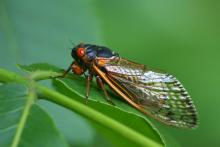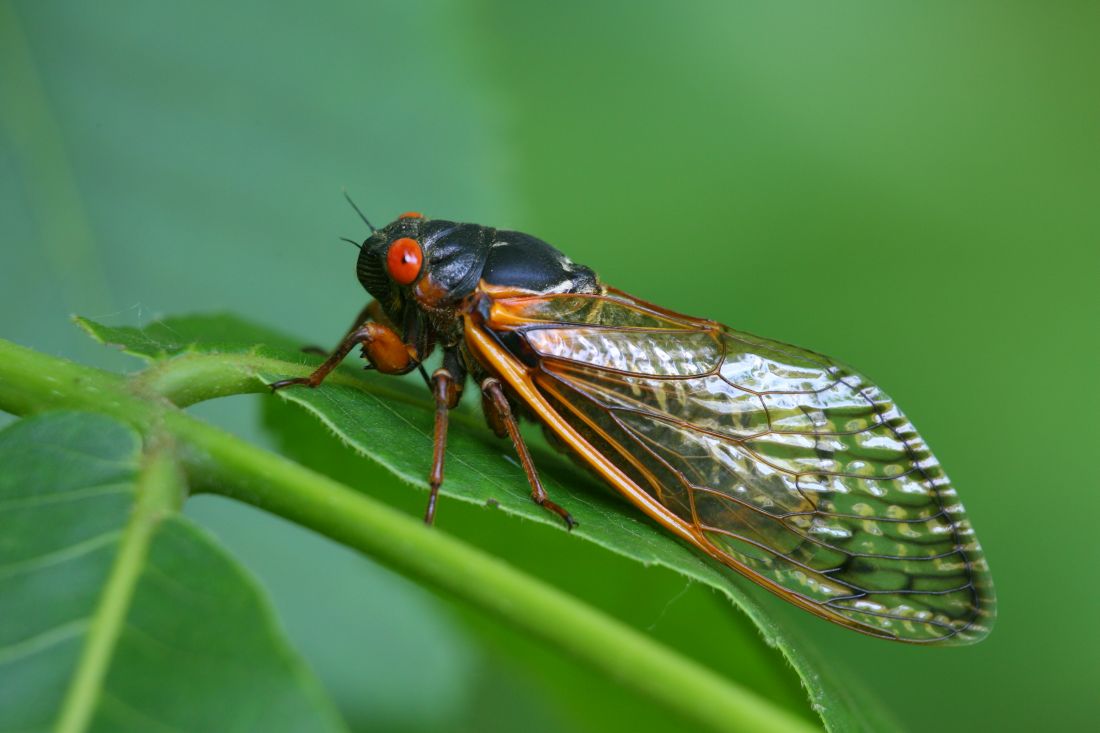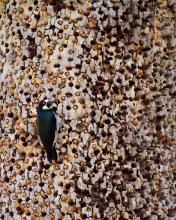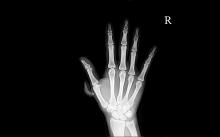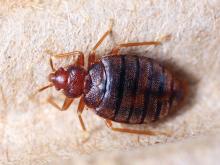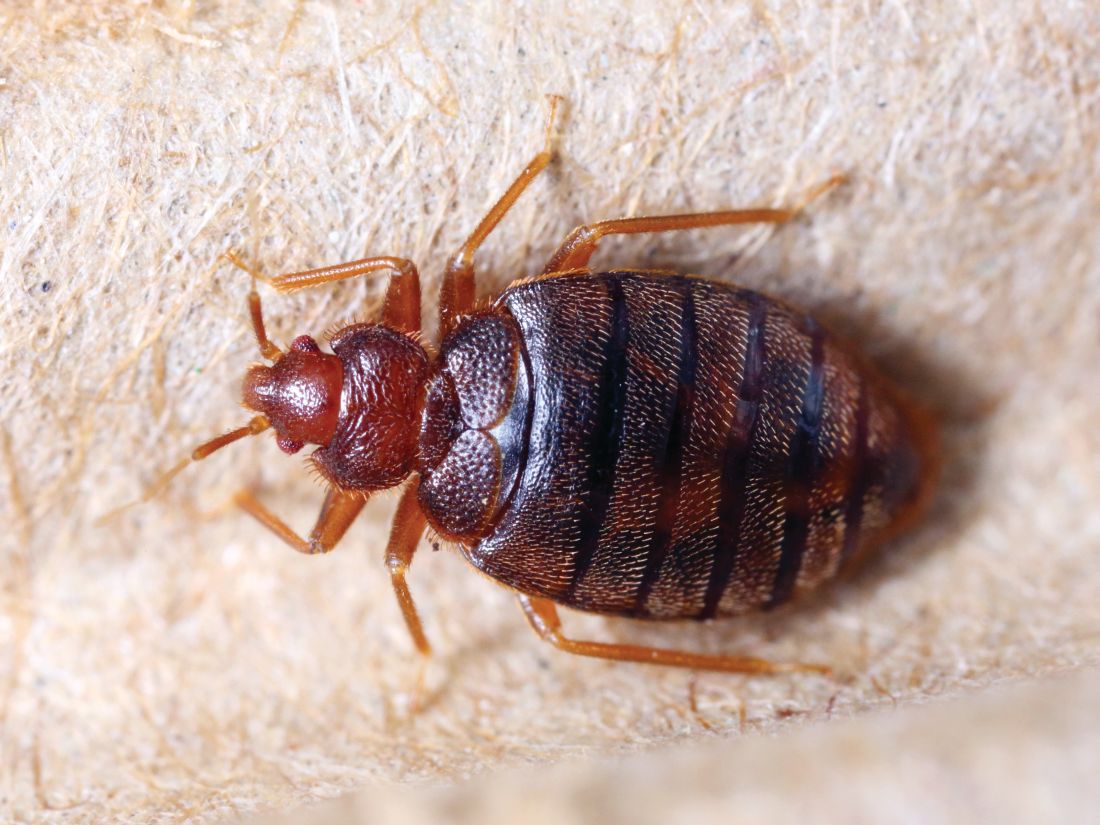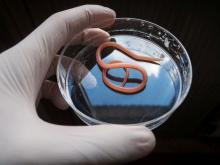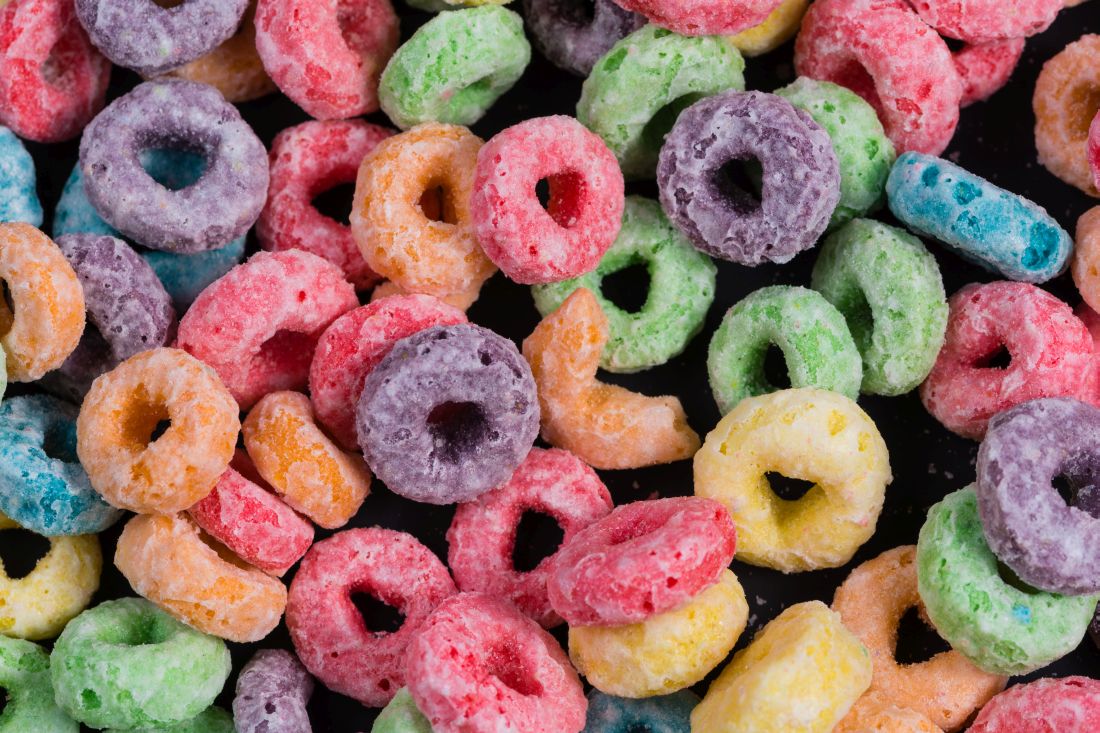User login
Flying acid zombies, poster face-lifts, and feces of champions
The flying dead
Just when you thought cicada infestations couldn’t get worse – the cicadas are now zombies on an acid trip.
West Virginia University researchers recently discovered that a fungus called Massopora, which has compounds similar to those found in psychedelic mushrooms, can infect cicadas and cause seriously weird behavior.
How weird, you ask? Well, male cicadas try to mate with everything they encounter, even though the fungus has eaten away their limbs … and their genitals. Talk about a bad trip.
It gets worse. These zombie-like cicadas are flying around and exposing their healthy brethren to the fungus. So, now we have to worry about potentially billions of these buggers becoming rotting, flying, hypersexual machines.
Makes a person really want to stay inside for the whole summer, perhaps in a fortified bunker. Just in case.
Also, for the curious: One of the study’s authors concedes that if a person were “motivated enough,” they might be able to get high off the cicada fungus. Not interested in finding out exactly how many cicadas you’d have to crunch on before you start tasting colors?
Poster do-over
It’s time to get ready for a revolution – and just in time for 4th of July. No, we’re not redeclaring independence from Britain. It’s something much, much more radical, at least to the scientific community.
Get ready for … the redesign of the science poster.
Mike Morrison, a doctoral student in psychology, has proposed a new way to present information at meetings that breathes new life into the tired poster design. While fascinating insights could be held on a poster, the reality of meetings and conferences is that people often skim over the posters they see, barely registering the information.
Morrison is taking advantage of the ever-present smartphone to ramp up the classic science poster to a new level. He proposes a format where the key research finding is smack in the middle, in big, readable language. Accompanying this is a QR code you can scan, which would take you to a page with the full details of the study.
Morrison tweeted out his idea, and it spread quickly through the scientific community, gaining traction from younger scientists and students who love the idea.
We’re in the age of remakes now – in which classics are reinvented for a new audience. It’s time the science poster got a face-lift, too.
Running a marathon, one Veillonella at a time
What’s the difference between an elite athlete and a person who’s out of juice after running for 30 seconds?
Well, many things, we’re sure. A proper diet, rigorous training, not spending 12 hours a day sitting behind a computer screen. But just to add insult to injury, according to a study published in Nature Medicine, athletes even poop better than us normal people.
That may require a bit of explanation. A group of researchers from Harvard University, Boston, analyzed stool samples from elite marathon runners before and just after they participated in the 2015 Boston Marathon. They found that, following the race, the athletes had significantly higher amounts of Veillonella in their microbiota. This bacteria breaks down lactic acid, which is made during intense exercise and causes muscle fatigue and stress.
Naturally, the next step was to take that bacteria, feed it to mice, then get them running on a treadmill.
While not every mouse fed Veillonella saw increased performance, on average, mice that received the bacteria saw a 13% improvement over their non–Veillonella enhanced friends.
The researchers noted that this sort of probiotic treatment could be useful to patients with metabolic diseases, such as diabetes. Plus, there’s the obvious benefit to athletes. We look forward to hearing advertisements swearing by Veillonella-infused Wheaties, the true breakfast of champions.
Put a little boredom in your life
Is your job an endless, soul-sucking vortex of dreariness? Do you stare at the wall for hours at a time while you’re at work, wishing you had something better to do? Do you look forward to leaving early to go to the dentist? [Editor query: What does this have to do with health care? LOTME: You’ll see. We’re building dramatic tension.]
Did you answer yes to any of these questions? Way to go! You’ve taken the first step on the road to creativity. [Still waiting. We’re almost there.]
A recent study examined the effects of boredom by assigning people to either a really boring task – sorting a bowl of red and green beans by color for 30 minutes using only one hand – or a nonboring art project using paper, glue, and, of course, beans. [What’s with the beans? It’s not our fault they used beans.]
The next task was the same for both groups: Come up with some reasons for being late for work and think of ideas for a new product by a hypothetical company. The answers were graded on their uniqueness, and the bean-sorting group had more creative ideas than did the art-project group.
The point is, ladies and gentlemen, that boredom is good. Boredom is right. Boredom works. [A Gordon Gekko reference? Couldn’t you find something from this century? No.]
By now you’re probably wondering: “But how can I get one of those really boring jobs? After all, I’m a doctor. I heal the sick and care for the needy. My work is way too interesting to inspire true creativity.” Have you ever considered writing a medical humor column?
[Note to readers: We’ve pulled the staff away from their building blocks and crayons and given them a timeout. Hopefully things will be a little better by next week.]
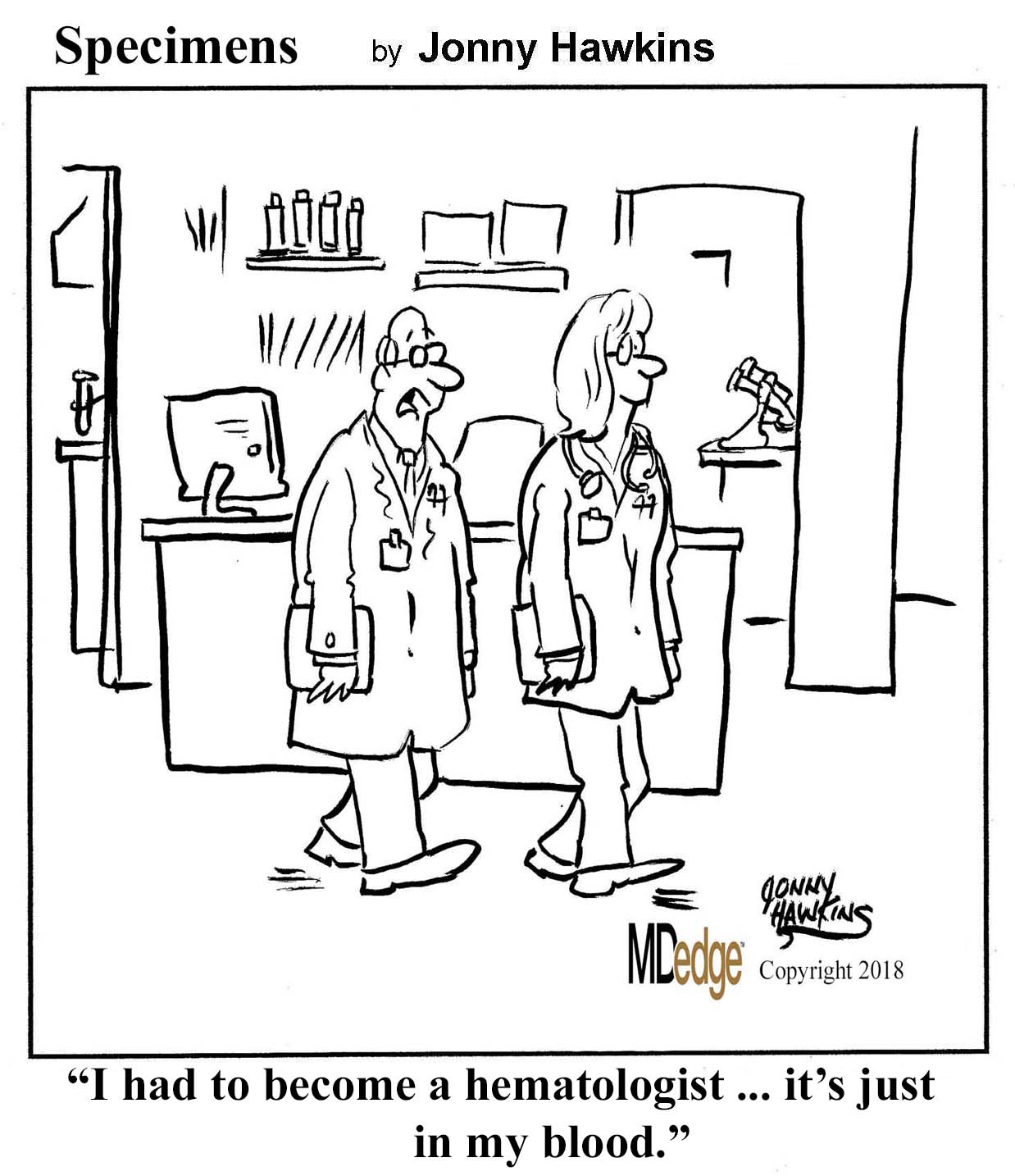
The flying dead
Just when you thought cicada infestations couldn’t get worse – the cicadas are now zombies on an acid trip.
West Virginia University researchers recently discovered that a fungus called Massopora, which has compounds similar to those found in psychedelic mushrooms, can infect cicadas and cause seriously weird behavior.
How weird, you ask? Well, male cicadas try to mate with everything they encounter, even though the fungus has eaten away their limbs … and their genitals. Talk about a bad trip.
It gets worse. These zombie-like cicadas are flying around and exposing their healthy brethren to the fungus. So, now we have to worry about potentially billions of these buggers becoming rotting, flying, hypersexual machines.
Makes a person really want to stay inside for the whole summer, perhaps in a fortified bunker. Just in case.
Also, for the curious: One of the study’s authors concedes that if a person were “motivated enough,” they might be able to get high off the cicada fungus. Not interested in finding out exactly how many cicadas you’d have to crunch on before you start tasting colors?
Poster do-over
It’s time to get ready for a revolution – and just in time for 4th of July. No, we’re not redeclaring independence from Britain. It’s something much, much more radical, at least to the scientific community.
Get ready for … the redesign of the science poster.
Mike Morrison, a doctoral student in psychology, has proposed a new way to present information at meetings that breathes new life into the tired poster design. While fascinating insights could be held on a poster, the reality of meetings and conferences is that people often skim over the posters they see, barely registering the information.
Morrison is taking advantage of the ever-present smartphone to ramp up the classic science poster to a new level. He proposes a format where the key research finding is smack in the middle, in big, readable language. Accompanying this is a QR code you can scan, which would take you to a page with the full details of the study.
Morrison tweeted out his idea, and it spread quickly through the scientific community, gaining traction from younger scientists and students who love the idea.
We’re in the age of remakes now – in which classics are reinvented for a new audience. It’s time the science poster got a face-lift, too.
Running a marathon, one Veillonella at a time
What’s the difference between an elite athlete and a person who’s out of juice after running for 30 seconds?
Well, many things, we’re sure. A proper diet, rigorous training, not spending 12 hours a day sitting behind a computer screen. But just to add insult to injury, according to a study published in Nature Medicine, athletes even poop better than us normal people.
That may require a bit of explanation. A group of researchers from Harvard University, Boston, analyzed stool samples from elite marathon runners before and just after they participated in the 2015 Boston Marathon. They found that, following the race, the athletes had significantly higher amounts of Veillonella in their microbiota. This bacteria breaks down lactic acid, which is made during intense exercise and causes muscle fatigue and stress.
Naturally, the next step was to take that bacteria, feed it to mice, then get them running on a treadmill.
While not every mouse fed Veillonella saw increased performance, on average, mice that received the bacteria saw a 13% improvement over their non–Veillonella enhanced friends.
The researchers noted that this sort of probiotic treatment could be useful to patients with metabolic diseases, such as diabetes. Plus, there’s the obvious benefit to athletes. We look forward to hearing advertisements swearing by Veillonella-infused Wheaties, the true breakfast of champions.
Put a little boredom in your life
Is your job an endless, soul-sucking vortex of dreariness? Do you stare at the wall for hours at a time while you’re at work, wishing you had something better to do? Do you look forward to leaving early to go to the dentist? [Editor query: What does this have to do with health care? LOTME: You’ll see. We’re building dramatic tension.]
Did you answer yes to any of these questions? Way to go! You’ve taken the first step on the road to creativity. [Still waiting. We’re almost there.]
A recent study examined the effects of boredom by assigning people to either a really boring task – sorting a bowl of red and green beans by color for 30 minutes using only one hand – or a nonboring art project using paper, glue, and, of course, beans. [What’s with the beans? It’s not our fault they used beans.]
The next task was the same for both groups: Come up with some reasons for being late for work and think of ideas for a new product by a hypothetical company. The answers were graded on their uniqueness, and the bean-sorting group had more creative ideas than did the art-project group.
The point is, ladies and gentlemen, that boredom is good. Boredom is right. Boredom works. [A Gordon Gekko reference? Couldn’t you find something from this century? No.]
By now you’re probably wondering: “But how can I get one of those really boring jobs? After all, I’m a doctor. I heal the sick and care for the needy. My work is way too interesting to inspire true creativity.” Have you ever considered writing a medical humor column?
[Note to readers: We’ve pulled the staff away from their building blocks and crayons and given them a timeout. Hopefully things will be a little better by next week.]

The flying dead
Just when you thought cicada infestations couldn’t get worse – the cicadas are now zombies on an acid trip.
West Virginia University researchers recently discovered that a fungus called Massopora, which has compounds similar to those found in psychedelic mushrooms, can infect cicadas and cause seriously weird behavior.
How weird, you ask? Well, male cicadas try to mate with everything they encounter, even though the fungus has eaten away their limbs … and their genitals. Talk about a bad trip.
It gets worse. These zombie-like cicadas are flying around and exposing their healthy brethren to the fungus. So, now we have to worry about potentially billions of these buggers becoming rotting, flying, hypersexual machines.
Makes a person really want to stay inside for the whole summer, perhaps in a fortified bunker. Just in case.
Also, for the curious: One of the study’s authors concedes that if a person were “motivated enough,” they might be able to get high off the cicada fungus. Not interested in finding out exactly how many cicadas you’d have to crunch on before you start tasting colors?
Poster do-over
It’s time to get ready for a revolution – and just in time for 4th of July. No, we’re not redeclaring independence from Britain. It’s something much, much more radical, at least to the scientific community.
Get ready for … the redesign of the science poster.
Mike Morrison, a doctoral student in psychology, has proposed a new way to present information at meetings that breathes new life into the tired poster design. While fascinating insights could be held on a poster, the reality of meetings and conferences is that people often skim over the posters they see, barely registering the information.
Morrison is taking advantage of the ever-present smartphone to ramp up the classic science poster to a new level. He proposes a format where the key research finding is smack in the middle, in big, readable language. Accompanying this is a QR code you can scan, which would take you to a page with the full details of the study.
Morrison tweeted out his idea, and it spread quickly through the scientific community, gaining traction from younger scientists and students who love the idea.
We’re in the age of remakes now – in which classics are reinvented for a new audience. It’s time the science poster got a face-lift, too.
Running a marathon, one Veillonella at a time
What’s the difference between an elite athlete and a person who’s out of juice after running for 30 seconds?
Well, many things, we’re sure. A proper diet, rigorous training, not spending 12 hours a day sitting behind a computer screen. But just to add insult to injury, according to a study published in Nature Medicine, athletes even poop better than us normal people.
That may require a bit of explanation. A group of researchers from Harvard University, Boston, analyzed stool samples from elite marathon runners before and just after they participated in the 2015 Boston Marathon. They found that, following the race, the athletes had significantly higher amounts of Veillonella in their microbiota. This bacteria breaks down lactic acid, which is made during intense exercise and causes muscle fatigue and stress.
Naturally, the next step was to take that bacteria, feed it to mice, then get them running on a treadmill.
While not every mouse fed Veillonella saw increased performance, on average, mice that received the bacteria saw a 13% improvement over their non–Veillonella enhanced friends.
The researchers noted that this sort of probiotic treatment could be useful to patients with metabolic diseases, such as diabetes. Plus, there’s the obvious benefit to athletes. We look forward to hearing advertisements swearing by Veillonella-infused Wheaties, the true breakfast of champions.
Put a little boredom in your life
Is your job an endless, soul-sucking vortex of dreariness? Do you stare at the wall for hours at a time while you’re at work, wishing you had something better to do? Do you look forward to leaving early to go to the dentist? [Editor query: What does this have to do with health care? LOTME: You’ll see. We’re building dramatic tension.]
Did you answer yes to any of these questions? Way to go! You’ve taken the first step on the road to creativity. [Still waiting. We’re almost there.]
A recent study examined the effects of boredom by assigning people to either a really boring task – sorting a bowl of red and green beans by color for 30 minutes using only one hand – or a nonboring art project using paper, glue, and, of course, beans. [What’s with the beans? It’s not our fault they used beans.]
The next task was the same for both groups: Come up with some reasons for being late for work and think of ideas for a new product by a hypothetical company. The answers were graded on their uniqueness, and the bean-sorting group had more creative ideas than did the art-project group.
The point is, ladies and gentlemen, that boredom is good. Boredom is right. Boredom works. [A Gordon Gekko reference? Couldn’t you find something from this century? No.]
By now you’re probably wondering: “But how can I get one of those really boring jobs? After all, I’m a doctor. I heal the sick and care for the needy. My work is way too interesting to inspire true creativity.” Have you ever considered writing a medical humor column?
[Note to readers: We’ve pulled the staff away from their building blocks and crayons and given them a timeout. Hopefully things will be a little better by next week.]

Dr. Google, potty pot, Snoopy smells cancer
Paging Dr. Google
When something hurts, itches, or burns, to whom do you turn? Not Mom or your physician – we all turn first to Google.
Apparently, sharing symptoms with our omniscient virtual overlords is a national pastime. A recent survey found that nearly 90% of people googled their health symptoms well before going to a doctor. Maybe that’s why we keep getting targeted ads for itchy foot cream?
The survey team constructed a map that broke down the most-googled symptoms for each state. While many states’ highest search were related to cold and flu, some places had more intriguing googles.
Californians have issues with sweaty palms, and New Jerseyans are concerned about their lucid dreaming. Wisconsin seems to have an epidemic of “light-colored poop” (must be all the cheese), while South Carolina has the opposite problem – their most googled symptom is “dark green stool.”
Idaho’s biggest health concern was “symptoms of E. coli”; so, if you’re visiting the Gem State, maybe bring your own food.
Find your state here!
Smartphone skull spikes
Ever felt a little down because you’re just a regular Homo sapiens? Thanks to smartphones, you might be the next step on the evolutionary chain!
Humans have started developing external occipital protuberances – actual spikes – at the base of their skull. Spikes on your skull? How metal is that?
The spike was first observed in 1885. But there has been a rapid increase in the appearance of them, and researchers believe it’s because of smartphones.
Before you start panicking, know that the skull spike is not caused by toxic radiation from your phone. David Shahar’s team from the University of the Sunshine Coast in Australia studied thousands of x-rays. They believe that the skull spikes develop because of the constant hunched-neck position we all take as we pore over our devices for hours a day. The spike is most common in younger people – 1 in 4 people aged 18-30 years had it. This calls for a LOT more yoga.
The nose knows cancer
Just when you thought man’s best friend couldn’t get any better, they go and learn how to smell cancer.
According to a study published in the Journal of the American Osteopathic Association, researchers trained a group of beagles – noted for their superior sense of smell – to sniff out differences in blood samples from healthy patients and those with lung cancer. Snoopy and friends correctly identified the cancerous samples 97% of the time and are now learning how to identify lung, breast, and colorectal cancer using breath samples.
The researchers argued that their findings could pave the way for an over-the-counter test, similar to that used for pregnancy – but where the patient breathes into a device, and it tells them whether they’re positive for cancer or not. However, we suspect the researchers just want to give everyone a dog. There are worse ideas.
And that’s not even the only bit of olfactory-related cancer news we’ve got this week. We’re moving from lung cancer to brain tumors, as a group of researchers at Tampere University in Finland have developed an artificial nose to literally sniff out malignant tissue during surgery.
Electrosurgical resection is common during brain operations, and this process gives off smoke. The nose can detect differences in the smoke from malignant tissue and healthy tissue, allowing the surgeons to more precisely remove tumors from the brain.
No word yet as to whether the surgeons actually have to wear the nose on top of their own, but we can only hope.
Legalizing a not-so-straight flush
How many times has this happened to you? You get up early, hoping to be the first one to the sewage treatment plant so you can get the really fresh wastewater samples. But when you get there, all they have is frozen.
Or maybe you’re part of the research team that analyzed the wastewater of Tacoma, Wash., to determine marijuana usage before and after it became legal in the state. In that case, you’re used to the frozen stuff. Those scientists spent 3 years looking for THC-COOH, which is produced when the psychoactive THC in cannabis is metabolized in the human body, to determine if users were switching from the illegal to the legal market.
Turns out they did. THC-COOH in wastewater increased by 9% per quarter from December 2013 to December 2016, while sales increased by nearly 70% per quarter from Aug. 1, 2014, when legal sales went into effect, to December 2016.
“Given that wastewater represents a total population measure, these findings suggest that many established users switched very quickly from the illegal to the legal market,” team leader Dan Burgard, PhD, of the University of Puget Sound, said in a written statement. “This is the strongest statement possible regarding displacement of the illegal market.”
And the frozen samples? Over the course of the study, the investigators made 387 trips to the two sewage treatment plants. We’ll let MyNorthwest.com explain the rest: “The scientists would pick up a cooler full of frozen wastewater samples, thaw them, and analyze them using liquid chromatography and mass spectrometry.”
Mmm, frozen sewage. Who says science isn’t glamorous?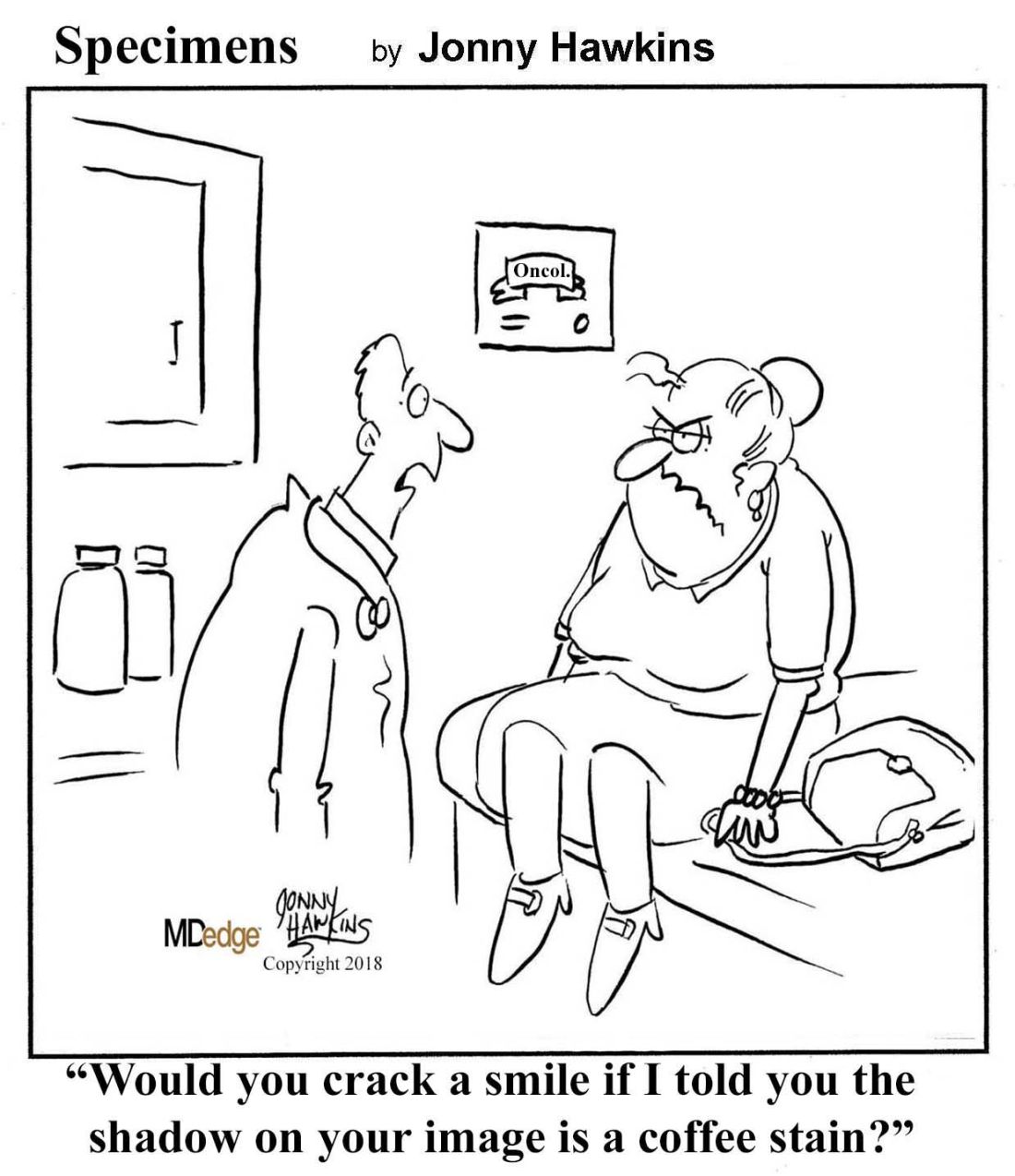
Paging Dr. Google
When something hurts, itches, or burns, to whom do you turn? Not Mom or your physician – we all turn first to Google.
Apparently, sharing symptoms with our omniscient virtual overlords is a national pastime. A recent survey found that nearly 90% of people googled their health symptoms well before going to a doctor. Maybe that’s why we keep getting targeted ads for itchy foot cream?
The survey team constructed a map that broke down the most-googled symptoms for each state. While many states’ highest search were related to cold and flu, some places had more intriguing googles.
Californians have issues with sweaty palms, and New Jerseyans are concerned about their lucid dreaming. Wisconsin seems to have an epidemic of “light-colored poop” (must be all the cheese), while South Carolina has the opposite problem – their most googled symptom is “dark green stool.”
Idaho’s biggest health concern was “symptoms of E. coli”; so, if you’re visiting the Gem State, maybe bring your own food.
Find your state here!
Smartphone skull spikes
Ever felt a little down because you’re just a regular Homo sapiens? Thanks to smartphones, you might be the next step on the evolutionary chain!
Humans have started developing external occipital protuberances – actual spikes – at the base of their skull. Spikes on your skull? How metal is that?
The spike was first observed in 1885. But there has been a rapid increase in the appearance of them, and researchers believe it’s because of smartphones.
Before you start panicking, know that the skull spike is not caused by toxic radiation from your phone. David Shahar’s team from the University of the Sunshine Coast in Australia studied thousands of x-rays. They believe that the skull spikes develop because of the constant hunched-neck position we all take as we pore over our devices for hours a day. The spike is most common in younger people – 1 in 4 people aged 18-30 years had it. This calls for a LOT more yoga.
The nose knows cancer
Just when you thought man’s best friend couldn’t get any better, they go and learn how to smell cancer.
According to a study published in the Journal of the American Osteopathic Association, researchers trained a group of beagles – noted for their superior sense of smell – to sniff out differences in blood samples from healthy patients and those with lung cancer. Snoopy and friends correctly identified the cancerous samples 97% of the time and are now learning how to identify lung, breast, and colorectal cancer using breath samples.
The researchers argued that their findings could pave the way for an over-the-counter test, similar to that used for pregnancy – but where the patient breathes into a device, and it tells them whether they’re positive for cancer or not. However, we suspect the researchers just want to give everyone a dog. There are worse ideas.
And that’s not even the only bit of olfactory-related cancer news we’ve got this week. We’re moving from lung cancer to brain tumors, as a group of researchers at Tampere University in Finland have developed an artificial nose to literally sniff out malignant tissue during surgery.
Electrosurgical resection is common during brain operations, and this process gives off smoke. The nose can detect differences in the smoke from malignant tissue and healthy tissue, allowing the surgeons to more precisely remove tumors from the brain.
No word yet as to whether the surgeons actually have to wear the nose on top of their own, but we can only hope.
Legalizing a not-so-straight flush
How many times has this happened to you? You get up early, hoping to be the first one to the sewage treatment plant so you can get the really fresh wastewater samples. But when you get there, all they have is frozen.
Or maybe you’re part of the research team that analyzed the wastewater of Tacoma, Wash., to determine marijuana usage before and after it became legal in the state. In that case, you’re used to the frozen stuff. Those scientists spent 3 years looking for THC-COOH, which is produced when the psychoactive THC in cannabis is metabolized in the human body, to determine if users were switching from the illegal to the legal market.
Turns out they did. THC-COOH in wastewater increased by 9% per quarter from December 2013 to December 2016, while sales increased by nearly 70% per quarter from Aug. 1, 2014, when legal sales went into effect, to December 2016.
“Given that wastewater represents a total population measure, these findings suggest that many established users switched very quickly from the illegal to the legal market,” team leader Dan Burgard, PhD, of the University of Puget Sound, said in a written statement. “This is the strongest statement possible regarding displacement of the illegal market.”
And the frozen samples? Over the course of the study, the investigators made 387 trips to the two sewage treatment plants. We’ll let MyNorthwest.com explain the rest: “The scientists would pick up a cooler full of frozen wastewater samples, thaw them, and analyze them using liquid chromatography and mass spectrometry.”
Mmm, frozen sewage. Who says science isn’t glamorous?
Paging Dr. Google
When something hurts, itches, or burns, to whom do you turn? Not Mom or your physician – we all turn first to Google.
Apparently, sharing symptoms with our omniscient virtual overlords is a national pastime. A recent survey found that nearly 90% of people googled their health symptoms well before going to a doctor. Maybe that’s why we keep getting targeted ads for itchy foot cream?
The survey team constructed a map that broke down the most-googled symptoms for each state. While many states’ highest search were related to cold and flu, some places had more intriguing googles.
Californians have issues with sweaty palms, and New Jerseyans are concerned about their lucid dreaming. Wisconsin seems to have an epidemic of “light-colored poop” (must be all the cheese), while South Carolina has the opposite problem – their most googled symptom is “dark green stool.”
Idaho’s biggest health concern was “symptoms of E. coli”; so, if you’re visiting the Gem State, maybe bring your own food.
Find your state here!
Smartphone skull spikes
Ever felt a little down because you’re just a regular Homo sapiens? Thanks to smartphones, you might be the next step on the evolutionary chain!
Humans have started developing external occipital protuberances – actual spikes – at the base of their skull. Spikes on your skull? How metal is that?
The spike was first observed in 1885. But there has been a rapid increase in the appearance of them, and researchers believe it’s because of smartphones.
Before you start panicking, know that the skull spike is not caused by toxic radiation from your phone. David Shahar’s team from the University of the Sunshine Coast in Australia studied thousands of x-rays. They believe that the skull spikes develop because of the constant hunched-neck position we all take as we pore over our devices for hours a day. The spike is most common in younger people – 1 in 4 people aged 18-30 years had it. This calls for a LOT more yoga.
The nose knows cancer
Just when you thought man’s best friend couldn’t get any better, they go and learn how to smell cancer.
According to a study published in the Journal of the American Osteopathic Association, researchers trained a group of beagles – noted for their superior sense of smell – to sniff out differences in blood samples from healthy patients and those with lung cancer. Snoopy and friends correctly identified the cancerous samples 97% of the time and are now learning how to identify lung, breast, and colorectal cancer using breath samples.
The researchers argued that their findings could pave the way for an over-the-counter test, similar to that used for pregnancy – but where the patient breathes into a device, and it tells them whether they’re positive for cancer or not. However, we suspect the researchers just want to give everyone a dog. There are worse ideas.
And that’s not even the only bit of olfactory-related cancer news we’ve got this week. We’re moving from lung cancer to brain tumors, as a group of researchers at Tampere University in Finland have developed an artificial nose to literally sniff out malignant tissue during surgery.
Electrosurgical resection is common during brain operations, and this process gives off smoke. The nose can detect differences in the smoke from malignant tissue and healthy tissue, allowing the surgeons to more precisely remove tumors from the brain.
No word yet as to whether the surgeons actually have to wear the nose on top of their own, but we can only hope.
Legalizing a not-so-straight flush
How many times has this happened to you? You get up early, hoping to be the first one to the sewage treatment plant so you can get the really fresh wastewater samples. But when you get there, all they have is frozen.
Or maybe you’re part of the research team that analyzed the wastewater of Tacoma, Wash., to determine marijuana usage before and after it became legal in the state. In that case, you’re used to the frozen stuff. Those scientists spent 3 years looking for THC-COOH, which is produced when the psychoactive THC in cannabis is metabolized in the human body, to determine if users were switching from the illegal to the legal market.
Turns out they did. THC-COOH in wastewater increased by 9% per quarter from December 2013 to December 2016, while sales increased by nearly 70% per quarter from Aug. 1, 2014, when legal sales went into effect, to December 2016.
“Given that wastewater represents a total population measure, these findings suggest that many established users switched very quickly from the illegal to the legal market,” team leader Dan Burgard, PhD, of the University of Puget Sound, said in a written statement. “This is the strongest statement possible regarding displacement of the illegal market.”
And the frozen samples? Over the course of the study, the investigators made 387 trips to the two sewage treatment plants. We’ll let MyNorthwest.com explain the rest: “The scientists would pick up a cooler full of frozen wastewater samples, thaw them, and analyze them using liquid chromatography and mass spectrometry.”
Mmm, frozen sewage. Who says science isn’t glamorous?
Prophylactic rudeness, surgical barbecue, and MRI-ectomy
Stay rude, stay alive
Middle fingers up! Did you know there’s a biological theory that proposes rudeness as a mechanism for health?
The theory proposes that the single most important factor of determining human behavior is disease. Where disease flourishes, humans are meaner to strangers. This is a self-preservation tactic – strangers could carry sickness, so it’s best to steer clear. As people continue to avoid strangers (and potential new diseases), larger divides develop between language and culture.
Researchers looked at countries and cultures around the world and found that their theory held true: Locations that had less disease tended to have less diversity in language and culture, while higher disease rates coincided with more cultural diversity.
Can disease really be the sole factor for all human behavior, however? Tough to say, but in the meantime we’ll endorse never talking to strangers – just in case.
Facebook fires
If you’re a health care provider, you’ve probably had a difficult patient experience or two … or 7,000. In the olden days before the Internet, perhaps you turned to a trusted friend to vent your frustrations. Maybe you were an avid journaler, furiously sharing your problems with the page. With the advent of social media, however, you can publicly exorcise your doctor demons for your whole network to share!
In case you weren’t sure, this is a terrible idea – and now there are the data to prove it.
Participants in a recent study rated (fake) Facebook profiles of medical professionals who posted comments about their workday. Some comments were ambiguous, such as, “Started with new electronic patient charts today ... interesting experience for sure.” Other comments were blatantly frustrated, saying things like “What is it with some people?? I know I only went through 9 years of university ... but really, I know what I’m talking about ... yeesh!!!”
Unsurprisingly, the Facebook profiles with the obviously frustrated comments were rated “significantly less credible” than profiles with ambiguous comments, and they negatively affected willingness to become a patient of the fake doctor.
All this to say, when you get the urge to angrily post on Facebook about that overprotective parent in your office, perhaps turn to your diary instead.
Saying goodbye to a 12,000-lb friend
Lots of physicians have ordered MRI scans for their patients, but how many have performed an MRI-ectomy?
What? No, no, NO! We’re not talking about removing one from a patient! How would that even work? You do know that the patient goes inside the machine, right?
Okay, let’s try again.
How do you remove an MRI machine from a medical center? Verrrry carefully … with a forklift … after you’ve cut a big hole in the side of the building. That’s what they did at OSF HealthCare’s Center for Health – Glen Park in Peoria, Ill., on June 10. They had a party first, though, and someone brought one of those giant cookies, which said, “We will miss you, Open MRI,” the Pekin Daily Times reported.
Photos were taken, cookie was eaten, and tears were shed. “It’s definitely kind of bittersweet that it’s going away,” said Jamie White, manager of CT and MRI outpatient diagnostics.
On the day of the actual removal, a small crowd gathered outside to watch the experts who were brought in to extract the 6-ton machine. “I just took it off life support,” said Eddie Rivera, an engineer with ATI-Advanced Technologies, Miami, when he disconnected the electricity.
We’re tearing up a bit ourselves, actually, but there is some good news. The machine is not headed to that big imaging center in the sky just yet. Like the saying goes: Old MRIs never die, they just get hauled off to Arizona for refurbishment.
A bad case of heartburn
You would think that your day couldn’t get much worse than having to undergo emergency surgery. That’s a pretty rough time, no matter what. But for a 60-year-old man receiving a repair of an ascending aortic dissection, his doctors managed to add insult to a very serious injury: They lit a fire inside their patient.
According to a case study presented at the 2019 Euroanaesthesia Congress in Vienna, it all started with the patient’s history of chronic obstructive pulmonary disease. Bullae in the lungs caused by the disease were stuck to the sternum, and during an attempt to separate the lung from the sternum, a bulla was punctured, causing an air leak. To compensate, the surgeons boosted the proportion of oxygen to 100%.
In retrospect, what happened next almost seems predictable. A spark from the electrocautery device ignited a dry surgical pack, and with the assist of that extra oxygen, the doctors immediately had a fire on their hands, localized within their patient’s chest cavity. We believe this is what the medical community calls a “complication.”
To the surgeons’ credit, the fire was extinguished immediately, and after they presumably took a break to change into clean underwear, the rest of the operation went without incident. Though we imagine the patient was a bit confused when he woke up to the smell of barbecue.

Stay rude, stay alive
Middle fingers up! Did you know there’s a biological theory that proposes rudeness as a mechanism for health?
The theory proposes that the single most important factor of determining human behavior is disease. Where disease flourishes, humans are meaner to strangers. This is a self-preservation tactic – strangers could carry sickness, so it’s best to steer clear. As people continue to avoid strangers (and potential new diseases), larger divides develop between language and culture.
Researchers looked at countries and cultures around the world and found that their theory held true: Locations that had less disease tended to have less diversity in language and culture, while higher disease rates coincided with more cultural diversity.
Can disease really be the sole factor for all human behavior, however? Tough to say, but in the meantime we’ll endorse never talking to strangers – just in case.
Facebook fires
If you’re a health care provider, you’ve probably had a difficult patient experience or two … or 7,000. In the olden days before the Internet, perhaps you turned to a trusted friend to vent your frustrations. Maybe you were an avid journaler, furiously sharing your problems with the page. With the advent of social media, however, you can publicly exorcise your doctor demons for your whole network to share!
In case you weren’t sure, this is a terrible idea – and now there are the data to prove it.
Participants in a recent study rated (fake) Facebook profiles of medical professionals who posted comments about their workday. Some comments were ambiguous, such as, “Started with new electronic patient charts today ... interesting experience for sure.” Other comments were blatantly frustrated, saying things like “What is it with some people?? I know I only went through 9 years of university ... but really, I know what I’m talking about ... yeesh!!!”
Unsurprisingly, the Facebook profiles with the obviously frustrated comments were rated “significantly less credible” than profiles with ambiguous comments, and they negatively affected willingness to become a patient of the fake doctor.
All this to say, when you get the urge to angrily post on Facebook about that overprotective parent in your office, perhaps turn to your diary instead.
Saying goodbye to a 12,000-lb friend
Lots of physicians have ordered MRI scans for their patients, but how many have performed an MRI-ectomy?
What? No, no, NO! We’re not talking about removing one from a patient! How would that even work? You do know that the patient goes inside the machine, right?
Okay, let’s try again.
How do you remove an MRI machine from a medical center? Verrrry carefully … with a forklift … after you’ve cut a big hole in the side of the building. That’s what they did at OSF HealthCare’s Center for Health – Glen Park in Peoria, Ill., on June 10. They had a party first, though, and someone brought one of those giant cookies, which said, “We will miss you, Open MRI,” the Pekin Daily Times reported.
Photos were taken, cookie was eaten, and tears were shed. “It’s definitely kind of bittersweet that it’s going away,” said Jamie White, manager of CT and MRI outpatient diagnostics.
On the day of the actual removal, a small crowd gathered outside to watch the experts who were brought in to extract the 6-ton machine. “I just took it off life support,” said Eddie Rivera, an engineer with ATI-Advanced Technologies, Miami, when he disconnected the electricity.
We’re tearing up a bit ourselves, actually, but there is some good news. The machine is not headed to that big imaging center in the sky just yet. Like the saying goes: Old MRIs never die, they just get hauled off to Arizona for refurbishment.
A bad case of heartburn
You would think that your day couldn’t get much worse than having to undergo emergency surgery. That’s a pretty rough time, no matter what. But for a 60-year-old man receiving a repair of an ascending aortic dissection, his doctors managed to add insult to a very serious injury: They lit a fire inside their patient.
According to a case study presented at the 2019 Euroanaesthesia Congress in Vienna, it all started with the patient’s history of chronic obstructive pulmonary disease. Bullae in the lungs caused by the disease were stuck to the sternum, and during an attempt to separate the lung from the sternum, a bulla was punctured, causing an air leak. To compensate, the surgeons boosted the proportion of oxygen to 100%.
In retrospect, what happened next almost seems predictable. A spark from the electrocautery device ignited a dry surgical pack, and with the assist of that extra oxygen, the doctors immediately had a fire on their hands, localized within their patient’s chest cavity. We believe this is what the medical community calls a “complication.”
To the surgeons’ credit, the fire was extinguished immediately, and after they presumably took a break to change into clean underwear, the rest of the operation went without incident. Though we imagine the patient was a bit confused when he woke up to the smell of barbecue.

Stay rude, stay alive
Middle fingers up! Did you know there’s a biological theory that proposes rudeness as a mechanism for health?
The theory proposes that the single most important factor of determining human behavior is disease. Where disease flourishes, humans are meaner to strangers. This is a self-preservation tactic – strangers could carry sickness, so it’s best to steer clear. As people continue to avoid strangers (and potential new diseases), larger divides develop between language and culture.
Researchers looked at countries and cultures around the world and found that their theory held true: Locations that had less disease tended to have less diversity in language and culture, while higher disease rates coincided with more cultural diversity.
Can disease really be the sole factor for all human behavior, however? Tough to say, but in the meantime we’ll endorse never talking to strangers – just in case.
Facebook fires
If you’re a health care provider, you’ve probably had a difficult patient experience or two … or 7,000. In the olden days before the Internet, perhaps you turned to a trusted friend to vent your frustrations. Maybe you were an avid journaler, furiously sharing your problems with the page. With the advent of social media, however, you can publicly exorcise your doctor demons for your whole network to share!
In case you weren’t sure, this is a terrible idea – and now there are the data to prove it.
Participants in a recent study rated (fake) Facebook profiles of medical professionals who posted comments about their workday. Some comments were ambiguous, such as, “Started with new electronic patient charts today ... interesting experience for sure.” Other comments were blatantly frustrated, saying things like “What is it with some people?? I know I only went through 9 years of university ... but really, I know what I’m talking about ... yeesh!!!”
Unsurprisingly, the Facebook profiles with the obviously frustrated comments were rated “significantly less credible” than profiles with ambiguous comments, and they negatively affected willingness to become a patient of the fake doctor.
All this to say, when you get the urge to angrily post on Facebook about that overprotective parent in your office, perhaps turn to your diary instead.
Saying goodbye to a 12,000-lb friend
Lots of physicians have ordered MRI scans for their patients, but how many have performed an MRI-ectomy?
What? No, no, NO! We’re not talking about removing one from a patient! How would that even work? You do know that the patient goes inside the machine, right?
Okay, let’s try again.
How do you remove an MRI machine from a medical center? Verrrry carefully … with a forklift … after you’ve cut a big hole in the side of the building. That’s what they did at OSF HealthCare’s Center for Health – Glen Park in Peoria, Ill., on June 10. They had a party first, though, and someone brought one of those giant cookies, which said, “We will miss you, Open MRI,” the Pekin Daily Times reported.
Photos were taken, cookie was eaten, and tears were shed. “It’s definitely kind of bittersweet that it’s going away,” said Jamie White, manager of CT and MRI outpatient diagnostics.
On the day of the actual removal, a small crowd gathered outside to watch the experts who were brought in to extract the 6-ton machine. “I just took it off life support,” said Eddie Rivera, an engineer with ATI-Advanced Technologies, Miami, when he disconnected the electricity.
We’re tearing up a bit ourselves, actually, but there is some good news. The machine is not headed to that big imaging center in the sky just yet. Like the saying goes: Old MRIs never die, they just get hauled off to Arizona for refurbishment.
A bad case of heartburn
You would think that your day couldn’t get much worse than having to undergo emergency surgery. That’s a pretty rough time, no matter what. But for a 60-year-old man receiving a repair of an ascending aortic dissection, his doctors managed to add insult to a very serious injury: They lit a fire inside their patient.
According to a case study presented at the 2019 Euroanaesthesia Congress in Vienna, it all started with the patient’s history of chronic obstructive pulmonary disease. Bullae in the lungs caused by the disease were stuck to the sternum, and during an attempt to separate the lung from the sternum, a bulla was punctured, causing an air leak. To compensate, the surgeons boosted the proportion of oxygen to 100%.
In retrospect, what happened next almost seems predictable. A spark from the electrocautery device ignited a dry surgical pack, and with the assist of that extra oxygen, the doctors immediately had a fire on their hands, localized within their patient’s chest cavity. We believe this is what the medical community calls a “complication.”
To the surgeons’ credit, the fire was extinguished immediately, and after they presumably took a break to change into clean underwear, the rest of the operation went without incident. Though we imagine the patient was a bit confused when he woke up to the smell of barbecue.

Darwin’s diet of species, umbrellas’ searing SPF, and trypophobia terror
Forks out for science
True scientists should have no limits to what they’ll do for their research. Charles Darwin proved that greatly during his life – he spent years discovering and cataloging new species.
But did you know he also chowed down on nearly every animal he found?
His taste for unusual fare began at Cambridge as a member of the “Glutton Club.” He and his fellow gluttons were dedicated to sampling “birds and beasts which were before unknown to human palate,” as reported in an article on NPR. His eating adventures only grew while on the famed Beagle voyage, where he tried puma, iguanas, armadillos, giant tortoises, and even a 20-pound rodent that he declared “the very best meat I ever tasted.”
The noble tradition of tasting your test subjects continues today. The author of the article referenced above asked scientists on social media for stories of eating what they are supposed to be studying, and the answers came pouring in.
From tasting tadpoles to nibbling on 30,000-year-old bison meat, scientists all over the world have found they can’t resist the call to just have a tiny taste.
The umbrella’s just not cutting it
Bad news for everyone who hates melanoma but also hates sunscreen: That Tommy Bahama beach umbrella isn’t doing much to shield your skin.
A team lead by researcher Hao Ou-Yang conducted a study comparing the effects of harmful UV rays on subjects who used sunscreen with subjects who only used the shade of an umbrella.
In the battle of Sun vs. Umbrella, the humble parasol had no chance. While neither sun protection method completely prevented sunburn, 78% of the umbrella-only group experienced sunburn, compared with 25% of the sunscreen wearers.
The researchers determined that umbrella shade alone is not sufficient to protect against sunburn during extended exposure to the sun (in the case of this experiment, exposure was 3.5 hours). Sunscreen, despite being smelly and sticky and gloopy, is definitely needed to protect skin from those UV rays. So, suck it up and pile on that Coppertone this summer.
Oh no, there goes Tokyo (again)
Godzilla. The king of the monsters. For 65 years, the big green guy has been the scourge (mostly) of Japan and the entire world. He arrives, he destroys, and there is very nearly nothing we can do about him.
If you’re an astute fan of the Godzilla series (and we love a good Godzilla movie at MDedge headquarters), you’ll have noticed that Godzilla is a lot bigger than he used to be. In the first movie, he stood at a relatively meager 50 meters. Nowadays, he’s scraping 120 meters, more than double his original size.
What’s going on?
In an actual study published in Science, a team at Dartmouth College in Hanover, N.H., determined that Godzilla is evolving 30 times faster than any other organism on Earth. It’s enough to make even the influenza virus jealous.
So, what is going on? Why is Godzilla evolving so quickly? The scientists assumed that Godzilla is a ceratosaurid dinosaur and ran through the usual suspects. No other dinosaur of that family got so big. Genetic drift and natural selection can’t explain it either.
The truth may be more unsettling: Our own anxiety is fueling his growth. Godzilla was born because of nuclear testing and the fear stemming from it. And the Dartmouth team even found a correlation between Godzilla’s size and American military spending from 1954 to 2019, a neat barometer of the world’s collective anxiety.
Or, you know, people just want to see a 400-foot-tall lizard destroying things. But that’s hardly worthy of a study in an elite research journal.
Hole lotta trypophobia goin’ on
We didn’t know this was even a thing, but Twitter doesn’t like pictures of woodpeckers … digging little holes in tree trunks … and then stuffing the holes with acorns.
A recent tweet of such a photo caused a minor pandemic of virality when users reacted with revulsion and panic caused by trypophobia, which is a fear of irregular patterns of small holes or bumps. You won’t find trypophobia in the DSM-5 – the term was first used in an Internet forum in 2005 – but it is a source of some debate among academics, according to Live Science.
One group says the patterns look like some poisonous animals, and that people are programmed by evolution to fear such creatures. Others suggest that the reaction is not fear but disgust, because the patterns of holes look like the lesions and pustules caused by infectious diseases such as smallpox.
We’re not scientists, so we’ll stay out of the debate on causality. But we do think we’ve uncovered the first documented case, and it goes back to the 1960s TV series “Batman.” The hero’s trusted sidekick, Robin (coincidentally, another type of bird), must have been the first person with trypophobia:
“Holy tintinnabulation!”
“Holy uncanny photographic mental processes!”
“Holy priceless collection of Etruscan snoods!”
Holy patterns of woodpecker acorns! There can be no diagnostic doubt: For Robin, it was all about the holes.
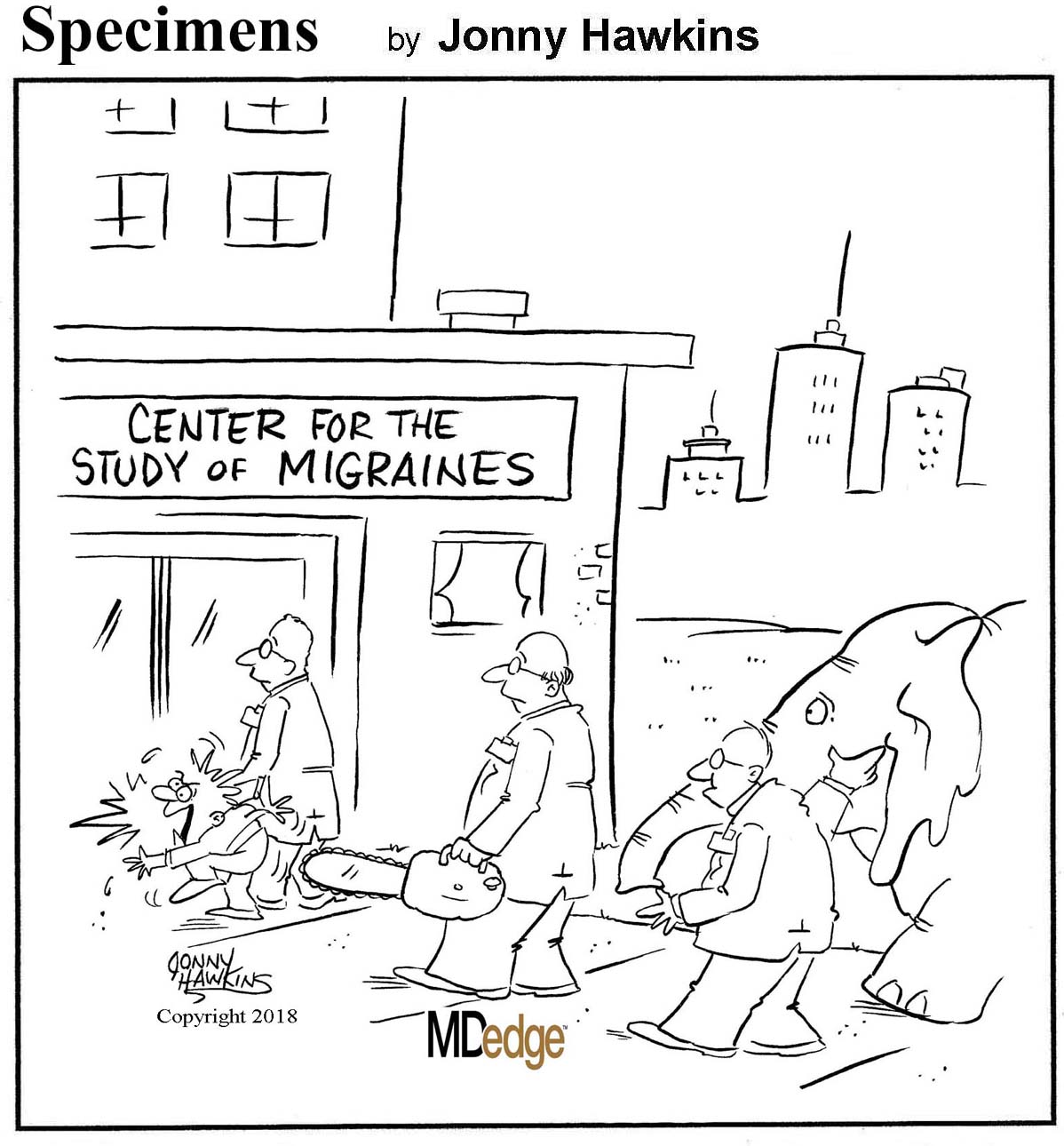
Forks out for science
True scientists should have no limits to what they’ll do for their research. Charles Darwin proved that greatly during his life – he spent years discovering and cataloging new species.
But did you know he also chowed down on nearly every animal he found?
His taste for unusual fare began at Cambridge as a member of the “Glutton Club.” He and his fellow gluttons were dedicated to sampling “birds and beasts which were before unknown to human palate,” as reported in an article on NPR. His eating adventures only grew while on the famed Beagle voyage, where he tried puma, iguanas, armadillos, giant tortoises, and even a 20-pound rodent that he declared “the very best meat I ever tasted.”
The noble tradition of tasting your test subjects continues today. The author of the article referenced above asked scientists on social media for stories of eating what they are supposed to be studying, and the answers came pouring in.
From tasting tadpoles to nibbling on 30,000-year-old bison meat, scientists all over the world have found they can’t resist the call to just have a tiny taste.
The umbrella’s just not cutting it
Bad news for everyone who hates melanoma but also hates sunscreen: That Tommy Bahama beach umbrella isn’t doing much to shield your skin.
A team lead by researcher Hao Ou-Yang conducted a study comparing the effects of harmful UV rays on subjects who used sunscreen with subjects who only used the shade of an umbrella.
In the battle of Sun vs. Umbrella, the humble parasol had no chance. While neither sun protection method completely prevented sunburn, 78% of the umbrella-only group experienced sunburn, compared with 25% of the sunscreen wearers.
The researchers determined that umbrella shade alone is not sufficient to protect against sunburn during extended exposure to the sun (in the case of this experiment, exposure was 3.5 hours). Sunscreen, despite being smelly and sticky and gloopy, is definitely needed to protect skin from those UV rays. So, suck it up and pile on that Coppertone this summer.
Oh no, there goes Tokyo (again)
Godzilla. The king of the monsters. For 65 years, the big green guy has been the scourge (mostly) of Japan and the entire world. He arrives, he destroys, and there is very nearly nothing we can do about him.
If you’re an astute fan of the Godzilla series (and we love a good Godzilla movie at MDedge headquarters), you’ll have noticed that Godzilla is a lot bigger than he used to be. In the first movie, he stood at a relatively meager 50 meters. Nowadays, he’s scraping 120 meters, more than double his original size.
What’s going on?
In an actual study published in Science, a team at Dartmouth College in Hanover, N.H., determined that Godzilla is evolving 30 times faster than any other organism on Earth. It’s enough to make even the influenza virus jealous.
So, what is going on? Why is Godzilla evolving so quickly? The scientists assumed that Godzilla is a ceratosaurid dinosaur and ran through the usual suspects. No other dinosaur of that family got so big. Genetic drift and natural selection can’t explain it either.
The truth may be more unsettling: Our own anxiety is fueling his growth. Godzilla was born because of nuclear testing and the fear stemming from it. And the Dartmouth team even found a correlation between Godzilla’s size and American military spending from 1954 to 2019, a neat barometer of the world’s collective anxiety.
Or, you know, people just want to see a 400-foot-tall lizard destroying things. But that’s hardly worthy of a study in an elite research journal.
Hole lotta trypophobia goin’ on
We didn’t know this was even a thing, but Twitter doesn’t like pictures of woodpeckers … digging little holes in tree trunks … and then stuffing the holes with acorns.
A recent tweet of such a photo caused a minor pandemic of virality when users reacted with revulsion and panic caused by trypophobia, which is a fear of irregular patterns of small holes or bumps. You won’t find trypophobia in the DSM-5 – the term was first used in an Internet forum in 2005 – but it is a source of some debate among academics, according to Live Science.
One group says the patterns look like some poisonous animals, and that people are programmed by evolution to fear such creatures. Others suggest that the reaction is not fear but disgust, because the patterns of holes look like the lesions and pustules caused by infectious diseases such as smallpox.
We’re not scientists, so we’ll stay out of the debate on causality. But we do think we’ve uncovered the first documented case, and it goes back to the 1960s TV series “Batman.” The hero’s trusted sidekick, Robin (coincidentally, another type of bird), must have been the first person with trypophobia:
“Holy tintinnabulation!”
“Holy uncanny photographic mental processes!”
“Holy priceless collection of Etruscan snoods!”
Holy patterns of woodpecker acorns! There can be no diagnostic doubt: For Robin, it was all about the holes.

Forks out for science
True scientists should have no limits to what they’ll do for their research. Charles Darwin proved that greatly during his life – he spent years discovering and cataloging new species.
But did you know he also chowed down on nearly every animal he found?
His taste for unusual fare began at Cambridge as a member of the “Glutton Club.” He and his fellow gluttons were dedicated to sampling “birds and beasts which were before unknown to human palate,” as reported in an article on NPR. His eating adventures only grew while on the famed Beagle voyage, where he tried puma, iguanas, armadillos, giant tortoises, and even a 20-pound rodent that he declared “the very best meat I ever tasted.”
The noble tradition of tasting your test subjects continues today. The author of the article referenced above asked scientists on social media for stories of eating what they are supposed to be studying, and the answers came pouring in.
From tasting tadpoles to nibbling on 30,000-year-old bison meat, scientists all over the world have found they can’t resist the call to just have a tiny taste.
The umbrella’s just not cutting it
Bad news for everyone who hates melanoma but also hates sunscreen: That Tommy Bahama beach umbrella isn’t doing much to shield your skin.
A team lead by researcher Hao Ou-Yang conducted a study comparing the effects of harmful UV rays on subjects who used sunscreen with subjects who only used the shade of an umbrella.
In the battle of Sun vs. Umbrella, the humble parasol had no chance. While neither sun protection method completely prevented sunburn, 78% of the umbrella-only group experienced sunburn, compared with 25% of the sunscreen wearers.
The researchers determined that umbrella shade alone is not sufficient to protect against sunburn during extended exposure to the sun (in the case of this experiment, exposure was 3.5 hours). Sunscreen, despite being smelly and sticky and gloopy, is definitely needed to protect skin from those UV rays. So, suck it up and pile on that Coppertone this summer.
Oh no, there goes Tokyo (again)
Godzilla. The king of the monsters. For 65 years, the big green guy has been the scourge (mostly) of Japan and the entire world. He arrives, he destroys, and there is very nearly nothing we can do about him.
If you’re an astute fan of the Godzilla series (and we love a good Godzilla movie at MDedge headquarters), you’ll have noticed that Godzilla is a lot bigger than he used to be. In the first movie, he stood at a relatively meager 50 meters. Nowadays, he’s scraping 120 meters, more than double his original size.
What’s going on?
In an actual study published in Science, a team at Dartmouth College in Hanover, N.H., determined that Godzilla is evolving 30 times faster than any other organism on Earth. It’s enough to make even the influenza virus jealous.
So, what is going on? Why is Godzilla evolving so quickly? The scientists assumed that Godzilla is a ceratosaurid dinosaur and ran through the usual suspects. No other dinosaur of that family got so big. Genetic drift and natural selection can’t explain it either.
The truth may be more unsettling: Our own anxiety is fueling his growth. Godzilla was born because of nuclear testing and the fear stemming from it. And the Dartmouth team even found a correlation between Godzilla’s size and American military spending from 1954 to 2019, a neat barometer of the world’s collective anxiety.
Or, you know, people just want to see a 400-foot-tall lizard destroying things. But that’s hardly worthy of a study in an elite research journal.
Hole lotta trypophobia goin’ on
We didn’t know this was even a thing, but Twitter doesn’t like pictures of woodpeckers … digging little holes in tree trunks … and then stuffing the holes with acorns.
A recent tweet of such a photo caused a minor pandemic of virality when users reacted with revulsion and panic caused by trypophobia, which is a fear of irregular patterns of small holes or bumps. You won’t find trypophobia in the DSM-5 – the term was first used in an Internet forum in 2005 – but it is a source of some debate among academics, according to Live Science.
One group says the patterns look like some poisonous animals, and that people are programmed by evolution to fear such creatures. Others suggest that the reaction is not fear but disgust, because the patterns of holes look like the lesions and pustules caused by infectious diseases such as smallpox.
We’re not scientists, so we’ll stay out of the debate on causality. But we do think we’ve uncovered the first documented case, and it goes back to the 1960s TV series “Batman.” The hero’s trusted sidekick, Robin (coincidentally, another type of bird), must have been the first person with trypophobia:
“Holy tintinnabulation!”
“Holy uncanny photographic mental processes!”
“Holy priceless collection of Etruscan snoods!”
Holy patterns of woodpecker acorns! There can be no diagnostic doubt: For Robin, it was all about the holes.

Air-conditioned cognition, brain worm, and six-fingered success
(Women’s) Winter is coming
Summer approaches and the Great Freeze begins to make its way through offices across the country.
Women everywhere start dragging out those cardigans stored in desks long ago. Blankets start appearing draped over the backs of chairs. “God, it’s freezing in here” becomes the oft-repeated refrain. It’s women’s winter … and a recent study has shown it has a marked effect on productivity.
Published last month in PlosOne, the study examined the effect of temperature on cognitive performance in both men and women. After studying participants’ performances on math and verbal tasks at various temperatures, researchers found that the women performed better at higher temps while the men performed worse. However, the performance increase for women was much larger than the decrease for men.
The authors concluded that workplaces with mixed genders might increase productivity (and overall office happiness) by cranking that thermostat a little higher than current standards. Perhaps this will be the beginning of the end of the thermostat war.
Need a hand – or finger?
Polydactyly. No, not the flying dinosaur – the congenital condition of having extra fingers or toes. One in every 2,000-3,000 babies is born with polydactyly, and while most doctors quickly remove the extra digits, a German study found that maybe they shouldn’t be so quick to the chopping block.
Researchers found that polydactyl people have more dexterity of movement, and the subjects’ brains showed a distinct representation of the extra digit. The subjects were able to carry out two-handed tasks with just one hand, and the study authors concluded that the subjects’ hand movements “had increased complexity relative to common five-fingered hands.”
Researchers also designed a special video game to test the six-fingered hand vs. using both hands. Video game results were the same with one hand or two, proving that more fingers equals more fun.
Cooking up controversy
If you had a giant spoon, what would you do with it?
Boston artist Domenic Esposito has just such a spoon – being an artist, he made it himself – and he’s been using it to draw attention to the opioid use disorder crisis by placing it “on the doorsteps of corporations and individuals whose recklessness and irresponsibility have fueled the epidemic,” according to the spoon’s website, The Opioid Spoon Project.
Since its creation, the 800-lb, 10.5-foot-long steel heroin spoon has visited Purdue Pharma headquarters in Stamford, Conn. – the spoon was hauled off by the city and taken to a police evidence lot – and Rhodes Pharmaceuticals in Coventry, R.I.
More recently, Mr. Esposito has taken the spoon on a 14-city “Honor Tour.” At each stop, individuals have the opportunity to sign the spoon in memory of “those who have lost their opioid addiction battles.”
The tour, which began in Marlborough, Mass., on May 11 and has been to such cities as Providence, R.I., and Boston, ends on June 7 in Rockville, Md., which happens to be the home of LOTME world headquarters. So, who doesn’t want to see a spoon over 10 feet long?
Worms on (or in) my mind
It sounds like a bad riddle: What looks like a brain tumor, acts like a brain tumor, but isn’t a brain tumor?
Rachel Palma, a 42-year-old woman from Middletown, N.Y., had the joy of finding out the answer.
For months, she’d been having strange symptoms: hallucinations, nightmares, trouble remembering words, memory blackouts, occasional loss of motor control. Her doctors were stumped, until they performed an MRI of her brain, discovering a marble-sized lesion in her brain. Another MRI, performed with contrast, caused the lesion to light up, a surefire sign of a malignant brain tumor. Treatment would require surgery, then chemo and radiation therapy.
But when the surgeons opened her head, they were greeted not with a tumor, but with something they described as looking “like a quail egg.” The object was removed and opened up, and to the delight of the doctors, a tapeworm popped out.
The condition – neurocysticercosis – is common in developing countries but rare in the United States. We won’t share all the details on how tapeworms end up in the brain, but needless to say, poor washing of hands is involved.
On the one hand, Mrs. Palma has made a full recovery with no need for chemo or radiation. On the other hand, she had a tapeworm in her brain. Somehow, she’s managed to make the brain tumor seem like the less unpleasant option. And for that, we salute her.
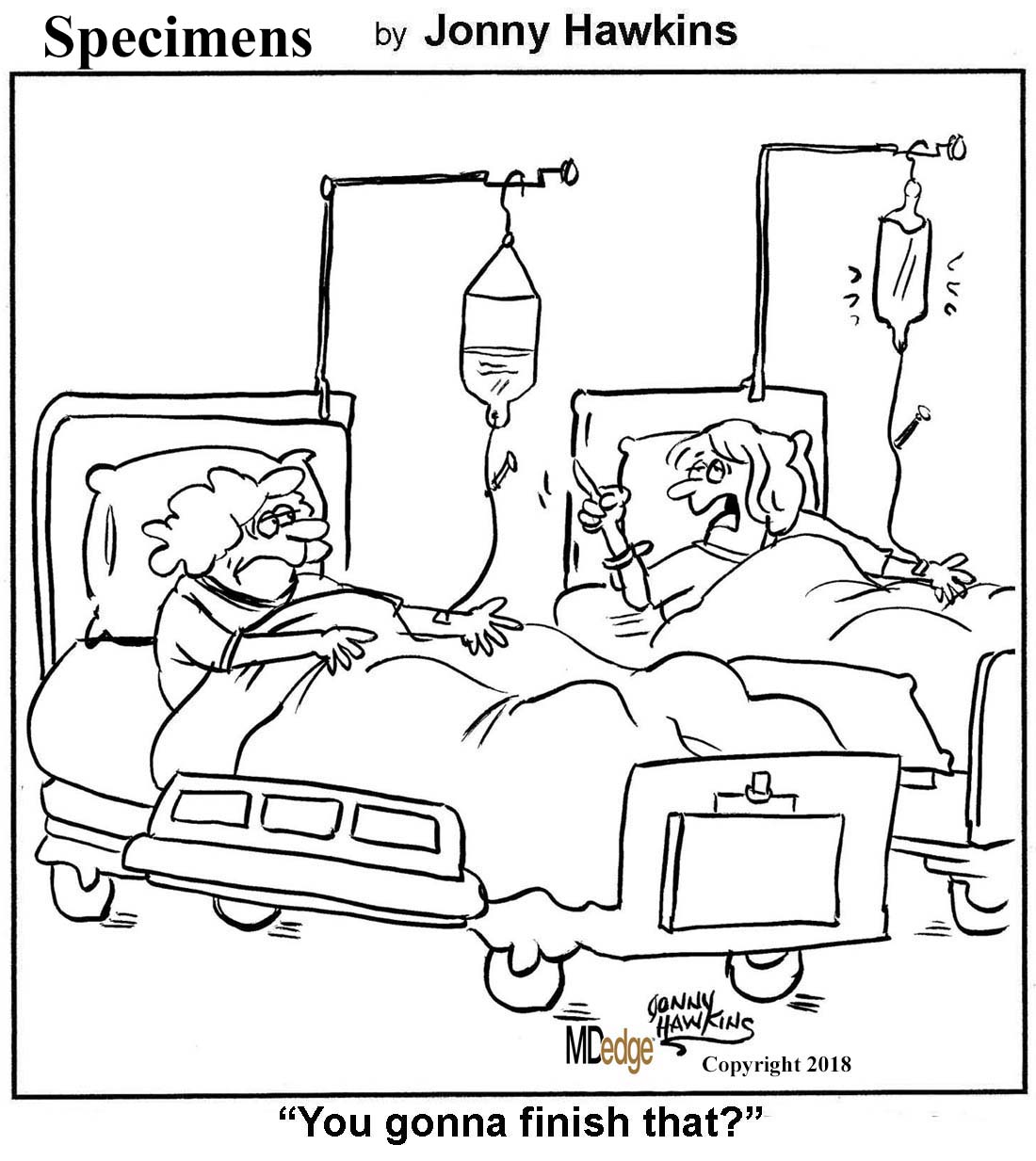
(Women’s) Winter is coming
Summer approaches and the Great Freeze begins to make its way through offices across the country.
Women everywhere start dragging out those cardigans stored in desks long ago. Blankets start appearing draped over the backs of chairs. “God, it’s freezing in here” becomes the oft-repeated refrain. It’s women’s winter … and a recent study has shown it has a marked effect on productivity.
Published last month in PlosOne, the study examined the effect of temperature on cognitive performance in both men and women. After studying participants’ performances on math and verbal tasks at various temperatures, researchers found that the women performed better at higher temps while the men performed worse. However, the performance increase for women was much larger than the decrease for men.
The authors concluded that workplaces with mixed genders might increase productivity (and overall office happiness) by cranking that thermostat a little higher than current standards. Perhaps this will be the beginning of the end of the thermostat war.
Need a hand – or finger?
Polydactyly. No, not the flying dinosaur – the congenital condition of having extra fingers or toes. One in every 2,000-3,000 babies is born with polydactyly, and while most doctors quickly remove the extra digits, a German study found that maybe they shouldn’t be so quick to the chopping block.
Researchers found that polydactyl people have more dexterity of movement, and the subjects’ brains showed a distinct representation of the extra digit. The subjects were able to carry out two-handed tasks with just one hand, and the study authors concluded that the subjects’ hand movements “had increased complexity relative to common five-fingered hands.”
Researchers also designed a special video game to test the six-fingered hand vs. using both hands. Video game results were the same with one hand or two, proving that more fingers equals more fun.
Cooking up controversy
If you had a giant spoon, what would you do with it?
Boston artist Domenic Esposito has just such a spoon – being an artist, he made it himself – and he’s been using it to draw attention to the opioid use disorder crisis by placing it “on the doorsteps of corporations and individuals whose recklessness and irresponsibility have fueled the epidemic,” according to the spoon’s website, The Opioid Spoon Project.
Since its creation, the 800-lb, 10.5-foot-long steel heroin spoon has visited Purdue Pharma headquarters in Stamford, Conn. – the spoon was hauled off by the city and taken to a police evidence lot – and Rhodes Pharmaceuticals in Coventry, R.I.
More recently, Mr. Esposito has taken the spoon on a 14-city “Honor Tour.” At each stop, individuals have the opportunity to sign the spoon in memory of “those who have lost their opioid addiction battles.”
The tour, which began in Marlborough, Mass., on May 11 and has been to such cities as Providence, R.I., and Boston, ends on June 7 in Rockville, Md., which happens to be the home of LOTME world headquarters. So, who doesn’t want to see a spoon over 10 feet long?
Worms on (or in) my mind
It sounds like a bad riddle: What looks like a brain tumor, acts like a brain tumor, but isn’t a brain tumor?
Rachel Palma, a 42-year-old woman from Middletown, N.Y., had the joy of finding out the answer.
For months, she’d been having strange symptoms: hallucinations, nightmares, trouble remembering words, memory blackouts, occasional loss of motor control. Her doctors were stumped, until they performed an MRI of her brain, discovering a marble-sized lesion in her brain. Another MRI, performed with contrast, caused the lesion to light up, a surefire sign of a malignant brain tumor. Treatment would require surgery, then chemo and radiation therapy.
But when the surgeons opened her head, they were greeted not with a tumor, but with something they described as looking “like a quail egg.” The object was removed and opened up, and to the delight of the doctors, a tapeworm popped out.
The condition – neurocysticercosis – is common in developing countries but rare in the United States. We won’t share all the details on how tapeworms end up in the brain, but needless to say, poor washing of hands is involved.
On the one hand, Mrs. Palma has made a full recovery with no need for chemo or radiation. On the other hand, she had a tapeworm in her brain. Somehow, she’s managed to make the brain tumor seem like the less unpleasant option. And for that, we salute her.

(Women’s) Winter is coming
Summer approaches and the Great Freeze begins to make its way through offices across the country.
Women everywhere start dragging out those cardigans stored in desks long ago. Blankets start appearing draped over the backs of chairs. “God, it’s freezing in here” becomes the oft-repeated refrain. It’s women’s winter … and a recent study has shown it has a marked effect on productivity.
Published last month in PlosOne, the study examined the effect of temperature on cognitive performance in both men and women. After studying participants’ performances on math and verbal tasks at various temperatures, researchers found that the women performed better at higher temps while the men performed worse. However, the performance increase for women was much larger than the decrease for men.
The authors concluded that workplaces with mixed genders might increase productivity (and overall office happiness) by cranking that thermostat a little higher than current standards. Perhaps this will be the beginning of the end of the thermostat war.
Need a hand – or finger?
Polydactyly. No, not the flying dinosaur – the congenital condition of having extra fingers or toes. One in every 2,000-3,000 babies is born with polydactyly, and while most doctors quickly remove the extra digits, a German study found that maybe they shouldn’t be so quick to the chopping block.
Researchers found that polydactyl people have more dexterity of movement, and the subjects’ brains showed a distinct representation of the extra digit. The subjects were able to carry out two-handed tasks with just one hand, and the study authors concluded that the subjects’ hand movements “had increased complexity relative to common five-fingered hands.”
Researchers also designed a special video game to test the six-fingered hand vs. using both hands. Video game results were the same with one hand or two, proving that more fingers equals more fun.
Cooking up controversy
If you had a giant spoon, what would you do with it?
Boston artist Domenic Esposito has just such a spoon – being an artist, he made it himself – and he’s been using it to draw attention to the opioid use disorder crisis by placing it “on the doorsteps of corporations and individuals whose recklessness and irresponsibility have fueled the epidemic,” according to the spoon’s website, The Opioid Spoon Project.
Since its creation, the 800-lb, 10.5-foot-long steel heroin spoon has visited Purdue Pharma headquarters in Stamford, Conn. – the spoon was hauled off by the city and taken to a police evidence lot – and Rhodes Pharmaceuticals in Coventry, R.I.
More recently, Mr. Esposito has taken the spoon on a 14-city “Honor Tour.” At each stop, individuals have the opportunity to sign the spoon in memory of “those who have lost their opioid addiction battles.”
The tour, which began in Marlborough, Mass., on May 11 and has been to such cities as Providence, R.I., and Boston, ends on June 7 in Rockville, Md., which happens to be the home of LOTME world headquarters. So, who doesn’t want to see a spoon over 10 feet long?
Worms on (or in) my mind
It sounds like a bad riddle: What looks like a brain tumor, acts like a brain tumor, but isn’t a brain tumor?
Rachel Palma, a 42-year-old woman from Middletown, N.Y., had the joy of finding out the answer.
For months, she’d been having strange symptoms: hallucinations, nightmares, trouble remembering words, memory blackouts, occasional loss of motor control. Her doctors were stumped, until they performed an MRI of her brain, discovering a marble-sized lesion in her brain. Another MRI, performed with contrast, caused the lesion to light up, a surefire sign of a malignant brain tumor. Treatment would require surgery, then chemo and radiation therapy.
But when the surgeons opened her head, they were greeted not with a tumor, but with something they described as looking “like a quail egg.” The object was removed and opened up, and to the delight of the doctors, a tapeworm popped out.
The condition – neurocysticercosis – is common in developing countries but rare in the United States. We won’t share all the details on how tapeworms end up in the brain, but needless to say, poor washing of hands is involved.
On the one hand, Mrs. Palma has made a full recovery with no need for chemo or radiation. On the other hand, she had a tapeworm in her brain. Somehow, she’s managed to make the brain tumor seem like the less unpleasant option. And for that, we salute her.

Human cheddar, bacteria-bashing berries, and constipation amnesia
No celeb cheese, please
You don’t mess with cheese. Cheese is love, cheese is life. But now, science has gone too far by bridging the gap between man and cheese.
In a new London art exhibit, a biologist and an artist teamed up to create different types of cheese made from … British celebs? Look, we love the Spice Girls as much as the next person, but that doesn’t mean we want Baby Spice Brie.
Bacteria taken from their face, armpits, ears, and even bellybuttons were used to create cheddar, Cheshire, and Stilton cheeses, among others. Yum. The goal of the (possibly blasphemous) exhibit is to change people’s view of microbes and demonstrate how they are essential to human existence. The cheesy contributors included Ruby Tandoh from the Great British Bake Off, chef Heston Blumenthal, and Blur bassist Alex James.
The artists and scientists involved did not yet determine if the cheese was safe for human consumption – not that anyone would eat them, anyway.
A poop oops
I’m sure we’ve all been in the position – you’re on your porcelain throne, things aren’t going your way. You’re praying to any and every deity under the sun to get things moving. Maybe you start bargaining … but would you give up a decade’s worth of memories to jump-start your intestines?
One woman in China seems to have made this deal with the devil. After straining a bit too hard during a nasty bout of constipation, the Hong Kong woman emerged from the bathroom displaying signs of amnesia. Her family quickly discovered she could not remember anything from the past 10 years and took her to the hospital, where she was diagnosed with transient global amnesia. The temporary amnesia was caused by an increase in abdominal and intracerebral pressure that limited oxygen flow to her brain.
The woman regained her memories after about 8 hours and had no recollection of the unfortunate series of events. Or so she claims. We imagine she might remember a bit and is going to start stocking up on prune juice from now on.
Juicy, red, and ready to save the world
The Avengers may have finally stopped Thanos, but what could they do against Escherichia coli? And Superman may be more powerful than a locomotive, but could he take on Pseudomonas aeruginosa?
In this week’s episode of Bacteria vs. the World, we meet the superhero the world really needs.
The humble cranberry doesn’t have super speed or an armored flying exoskeleton, but it does have the power to help antibiotics fight the bacterial menace, as researchers at McGill University and Institut National de la Recherche Scientifique, both in Montreal, discovered.
They found that bacteria exposed to a cranberry extract known as proanthocyanidin had increased sensitivity to antibiotics. The extract, it appears, makes bacterial cell walls more permeable to antibiotics and interferes with the pump mechanism that bacteria use to rid themselves of the drugs. “The antibiotic penetrates more easily, and the bacteria have a harder time getting rid of it,” so the drug is effective at a lower dose, they explained.
But wait, there’s more! “When we simultaneously treated the bacteria with an antibiotic and the cranberry extract, no resistance developed. We were very surprised by this,” lead author Nathalie Tufenkji, PhD, said in a written statement.
This is all great news, of course, but we’re a little surprised by their surprise. Here’s why: The scientific name of the American cranberry is Vaccinium macrocarpon. Vaccinium? Coincidence? We think not.
Who needs oncologists anyway?
We’re no strangers to gross-out stories here at Livin’ on the MDedge, but fair warning: This is really up there on the gross-ometer. You may want to brace yourselves.
As with so many good stories, our tale begins with a drunk man vomiting. The 63-year-old man from China had been feeling some discomfort in his throat for some time, especially when eating, but had, up to that point, ignored it. But as the man voided the evening’s mistakes back up to where they came from, something in his throat came loose. Specifically, a meatball-like mass that the man would later describe as a “long, forked tongue.”
Thinking as only a drunk man could, our intrepid friend decided that this object was an integral part of his body and that the best course of action would be to find a glass of water and swallow the mass. However, he did follow this flash of brilliance with an actual good decision, checking himself into the nearest hospital.
As the doctors were examining the man, they discovered the cherry on top of this disgusting story: He’d actually barfed up a tumor. Specifically, a large fibroma, measuring 15 cm by 4 cm, that had taken up residence in the man’s throat. If it hadn’t come out, the fibroma could have continued to grow, potentially obstructing the man’s ability to breathe.
While we’re glad things worked out for our inebriated friend, we’d like to recommend a trip to the doctor for anyone currently having mysterious difficulty swallowing. Don’t make us read about more people throwing up parts of their body. Please.
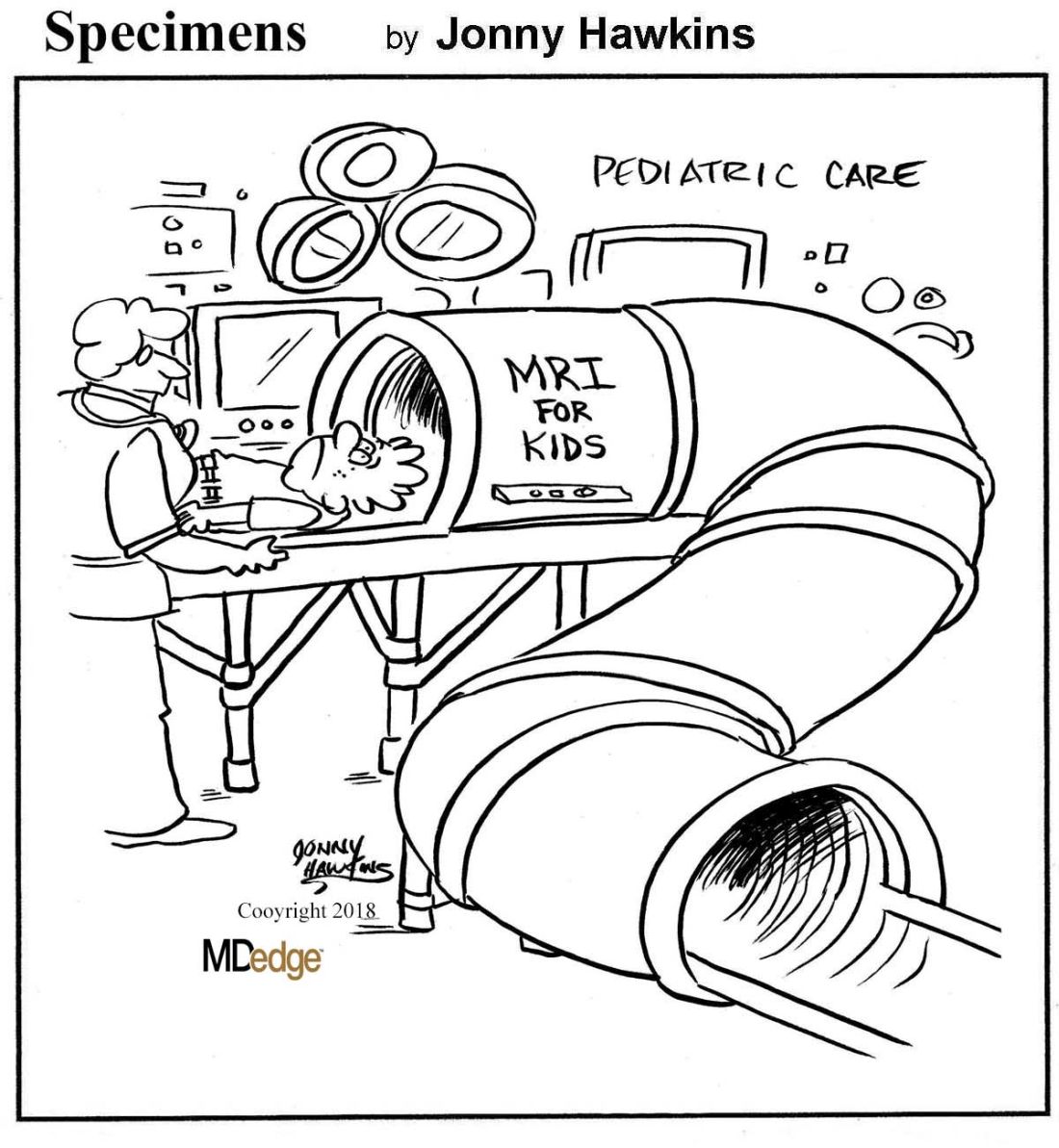
No celeb cheese, please
You don’t mess with cheese. Cheese is love, cheese is life. But now, science has gone too far by bridging the gap between man and cheese.
In a new London art exhibit, a biologist and an artist teamed up to create different types of cheese made from … British celebs? Look, we love the Spice Girls as much as the next person, but that doesn’t mean we want Baby Spice Brie.
Bacteria taken from their face, armpits, ears, and even bellybuttons were used to create cheddar, Cheshire, and Stilton cheeses, among others. Yum. The goal of the (possibly blasphemous) exhibit is to change people’s view of microbes and demonstrate how they are essential to human existence. The cheesy contributors included Ruby Tandoh from the Great British Bake Off, chef Heston Blumenthal, and Blur bassist Alex James.
The artists and scientists involved did not yet determine if the cheese was safe for human consumption – not that anyone would eat them, anyway.
A poop oops
I’m sure we’ve all been in the position – you’re on your porcelain throne, things aren’t going your way. You’re praying to any and every deity under the sun to get things moving. Maybe you start bargaining … but would you give up a decade’s worth of memories to jump-start your intestines?
One woman in China seems to have made this deal with the devil. After straining a bit too hard during a nasty bout of constipation, the Hong Kong woman emerged from the bathroom displaying signs of amnesia. Her family quickly discovered she could not remember anything from the past 10 years and took her to the hospital, where she was diagnosed with transient global amnesia. The temporary amnesia was caused by an increase in abdominal and intracerebral pressure that limited oxygen flow to her brain.
The woman regained her memories after about 8 hours and had no recollection of the unfortunate series of events. Or so she claims. We imagine she might remember a bit and is going to start stocking up on prune juice from now on.
Juicy, red, and ready to save the world
The Avengers may have finally stopped Thanos, but what could they do against Escherichia coli? And Superman may be more powerful than a locomotive, but could he take on Pseudomonas aeruginosa?
In this week’s episode of Bacteria vs. the World, we meet the superhero the world really needs.
The humble cranberry doesn’t have super speed or an armored flying exoskeleton, but it does have the power to help antibiotics fight the bacterial menace, as researchers at McGill University and Institut National de la Recherche Scientifique, both in Montreal, discovered.
They found that bacteria exposed to a cranberry extract known as proanthocyanidin had increased sensitivity to antibiotics. The extract, it appears, makes bacterial cell walls more permeable to antibiotics and interferes with the pump mechanism that bacteria use to rid themselves of the drugs. “The antibiotic penetrates more easily, and the bacteria have a harder time getting rid of it,” so the drug is effective at a lower dose, they explained.
But wait, there’s more! “When we simultaneously treated the bacteria with an antibiotic and the cranberry extract, no resistance developed. We were very surprised by this,” lead author Nathalie Tufenkji, PhD, said in a written statement.
This is all great news, of course, but we’re a little surprised by their surprise. Here’s why: The scientific name of the American cranberry is Vaccinium macrocarpon. Vaccinium? Coincidence? We think not.
Who needs oncologists anyway?
We’re no strangers to gross-out stories here at Livin’ on the MDedge, but fair warning: This is really up there on the gross-ometer. You may want to brace yourselves.
As with so many good stories, our tale begins with a drunk man vomiting. The 63-year-old man from China had been feeling some discomfort in his throat for some time, especially when eating, but had, up to that point, ignored it. But as the man voided the evening’s mistakes back up to where they came from, something in his throat came loose. Specifically, a meatball-like mass that the man would later describe as a “long, forked tongue.”
Thinking as only a drunk man could, our intrepid friend decided that this object was an integral part of his body and that the best course of action would be to find a glass of water and swallow the mass. However, he did follow this flash of brilliance with an actual good decision, checking himself into the nearest hospital.
As the doctors were examining the man, they discovered the cherry on top of this disgusting story: He’d actually barfed up a tumor. Specifically, a large fibroma, measuring 15 cm by 4 cm, that had taken up residence in the man’s throat. If it hadn’t come out, the fibroma could have continued to grow, potentially obstructing the man’s ability to breathe.
While we’re glad things worked out for our inebriated friend, we’d like to recommend a trip to the doctor for anyone currently having mysterious difficulty swallowing. Don’t make us read about more people throwing up parts of their body. Please.

No celeb cheese, please
You don’t mess with cheese. Cheese is love, cheese is life. But now, science has gone too far by bridging the gap between man and cheese.
In a new London art exhibit, a biologist and an artist teamed up to create different types of cheese made from … British celebs? Look, we love the Spice Girls as much as the next person, but that doesn’t mean we want Baby Spice Brie.
Bacteria taken from their face, armpits, ears, and even bellybuttons were used to create cheddar, Cheshire, and Stilton cheeses, among others. Yum. The goal of the (possibly blasphemous) exhibit is to change people’s view of microbes and demonstrate how they are essential to human existence. The cheesy contributors included Ruby Tandoh from the Great British Bake Off, chef Heston Blumenthal, and Blur bassist Alex James.
The artists and scientists involved did not yet determine if the cheese was safe for human consumption – not that anyone would eat them, anyway.
A poop oops
I’m sure we’ve all been in the position – you’re on your porcelain throne, things aren’t going your way. You’re praying to any and every deity under the sun to get things moving. Maybe you start bargaining … but would you give up a decade’s worth of memories to jump-start your intestines?
One woman in China seems to have made this deal with the devil. After straining a bit too hard during a nasty bout of constipation, the Hong Kong woman emerged from the bathroom displaying signs of amnesia. Her family quickly discovered she could not remember anything from the past 10 years and took her to the hospital, where she was diagnosed with transient global amnesia. The temporary amnesia was caused by an increase in abdominal and intracerebral pressure that limited oxygen flow to her brain.
The woman regained her memories after about 8 hours and had no recollection of the unfortunate series of events. Or so she claims. We imagine she might remember a bit and is going to start stocking up on prune juice from now on.
Juicy, red, and ready to save the world
The Avengers may have finally stopped Thanos, but what could they do against Escherichia coli? And Superman may be more powerful than a locomotive, but could he take on Pseudomonas aeruginosa?
In this week’s episode of Bacteria vs. the World, we meet the superhero the world really needs.
The humble cranberry doesn’t have super speed or an armored flying exoskeleton, but it does have the power to help antibiotics fight the bacterial menace, as researchers at McGill University and Institut National de la Recherche Scientifique, both in Montreal, discovered.
They found that bacteria exposed to a cranberry extract known as proanthocyanidin had increased sensitivity to antibiotics. The extract, it appears, makes bacterial cell walls more permeable to antibiotics and interferes with the pump mechanism that bacteria use to rid themselves of the drugs. “The antibiotic penetrates more easily, and the bacteria have a harder time getting rid of it,” so the drug is effective at a lower dose, they explained.
But wait, there’s more! “When we simultaneously treated the bacteria with an antibiotic and the cranberry extract, no resistance developed. We were very surprised by this,” lead author Nathalie Tufenkji, PhD, said in a written statement.
This is all great news, of course, but we’re a little surprised by their surprise. Here’s why: The scientific name of the American cranberry is Vaccinium macrocarpon. Vaccinium? Coincidence? We think not.
Who needs oncologists anyway?
We’re no strangers to gross-out stories here at Livin’ on the MDedge, but fair warning: This is really up there on the gross-ometer. You may want to brace yourselves.
As with so many good stories, our tale begins with a drunk man vomiting. The 63-year-old man from China had been feeling some discomfort in his throat for some time, especially when eating, but had, up to that point, ignored it. But as the man voided the evening’s mistakes back up to where they came from, something in his throat came loose. Specifically, a meatball-like mass that the man would later describe as a “long, forked tongue.”
Thinking as only a drunk man could, our intrepid friend decided that this object was an integral part of his body and that the best course of action would be to find a glass of water and swallow the mass. However, he did follow this flash of brilliance with an actual good decision, checking himself into the nearest hospital.
As the doctors were examining the man, they discovered the cherry on top of this disgusting story: He’d actually barfed up a tumor. Specifically, a large fibroma, measuring 15 cm by 4 cm, that had taken up residence in the man’s throat. If it hadn’t come out, the fibroma could have continued to grow, potentially obstructing the man’s ability to breathe.
While we’re glad things worked out for our inebriated friend, we’d like to recommend a trip to the doctor for anyone currently having mysterious difficulty swallowing. Don’t make us read about more people throwing up parts of their body. Please.

Bed bug fossils, dogs in your DNA, and coffee colon
Goodnight, sleep tight ...
File this under creepy-crawly things you never wanted to learn about but now you know. New research into cimicid fossils (a.k.a. bed bugs) shows that the blood-sucking parasites are as old as the dinosaurs.
Bed bugs have been on earth for 115 million years – approximately the same amount of time it takes to get rid of them from your home.
Bats have long been assumed to be the ancestral host of these horrific pests, but a bed bug fossil shows that they precede bats by nearly 30 million years. The idea of a bed bug “fossil” is a little suspicious to us over here at LOTME, though, because we are pretty positive bed bugs only multiply and never die.
The new research, published in Cell, confirmed that the bed bug species had a major split into the two most common forms millions of years before humans arrived. Also confirmed: Dinosaurs clearly slept in beds, and that’s where bed bugs came from.
Dog person? It’s in the genes
Are you a total dog lover? Would you totally risk a little infectious bug if you got to play with some pups? Turns out, your love for Fido might be predicted by your DNA.
An in-depth examination of the Swedish Twin Registry and national dog registers in Sweden found that genetic factors greatly contribute to dog ownership in Sweden. The study could not identify which genes are involved in our choices to keep dogs or if they related to evolution-related factors.
This is good news for dog people, though, because it suggests that if you love dogs, so does your family, and therefore you will be surrounded by dogs forever. At least that is what we’re choosing to believe.
This study could not be repeated with cat owners, because everyone knows cats own their humans, and the cats of Sweden were not interested in participating.
Gastroenterologists answer the big questions
Why does coffee make you poop? All coffee drinkers know this to be the case, and many even plan their mornings around it. But the real reason for this little side effect has always been a bit of a mystery.
Now, a group of researchers from the University of Texas may have an answer.
In a study presented at the annual Digestive Disease Week, the researchers fed coffee to rats for 3 days, analyzing their feces for changes in composition and bacterial make-up. (The joys of being a scientist.) They found that this diet suppressed the bacterial content of the feces; in addition, bacterial growth within the poop was suppressed when exposed to a 1.5% coffee solution on a petri dish.
An analysis of the rats’ intestines – dream job material right there – showed increased muscular motility. All of these effects occurred regardless of caffeine content.
And here’s a bonus: This was more than research just for research’s sake! The researchers claim that, given future study into the subject, coffee could be used as a treatment for ileus, a condition encountered after surgery where the intestines stop working. Apparently, it’s not just your brain that needs to be woken up – even your digestive system could use a coffee now and again.
Big honor for a small pharmaceutical partner
This week, we ask an important medical question: What’s your favorite microbe? Think about that for a minute while we discuss New Jersey’s new bacterial BFF.
S. griseus, it turns out, was discovered in the soil of New Jersey in 1916 and also was “isolated from the gullet of a healthy New Jersey chicken.” In 1943, researchers from Rutgers University (the state university of New Jersey, by the way) used it to create streptomycin, the first antibiotic to treat cholera and tuberculosis. In 1952, Rutgers researcher Selman Waksman received a Nobel Prize for discovering the microbe and creating the antibiotic.
LOTME certainly acknowledges the place of S. griseus in history, but we’ve selected another significant organism as our official microbe: Saccharomyces cerevisiae, also known as brewer’s yeast.
And since we know you were wondering, our official amphibian is the Eastern Hellbender salamander, our official fabric is Carrickmacross lace, our official soil is Harney silt loam, our official fictional opera singer is Placebo Domingo, and our official sport is jousting.
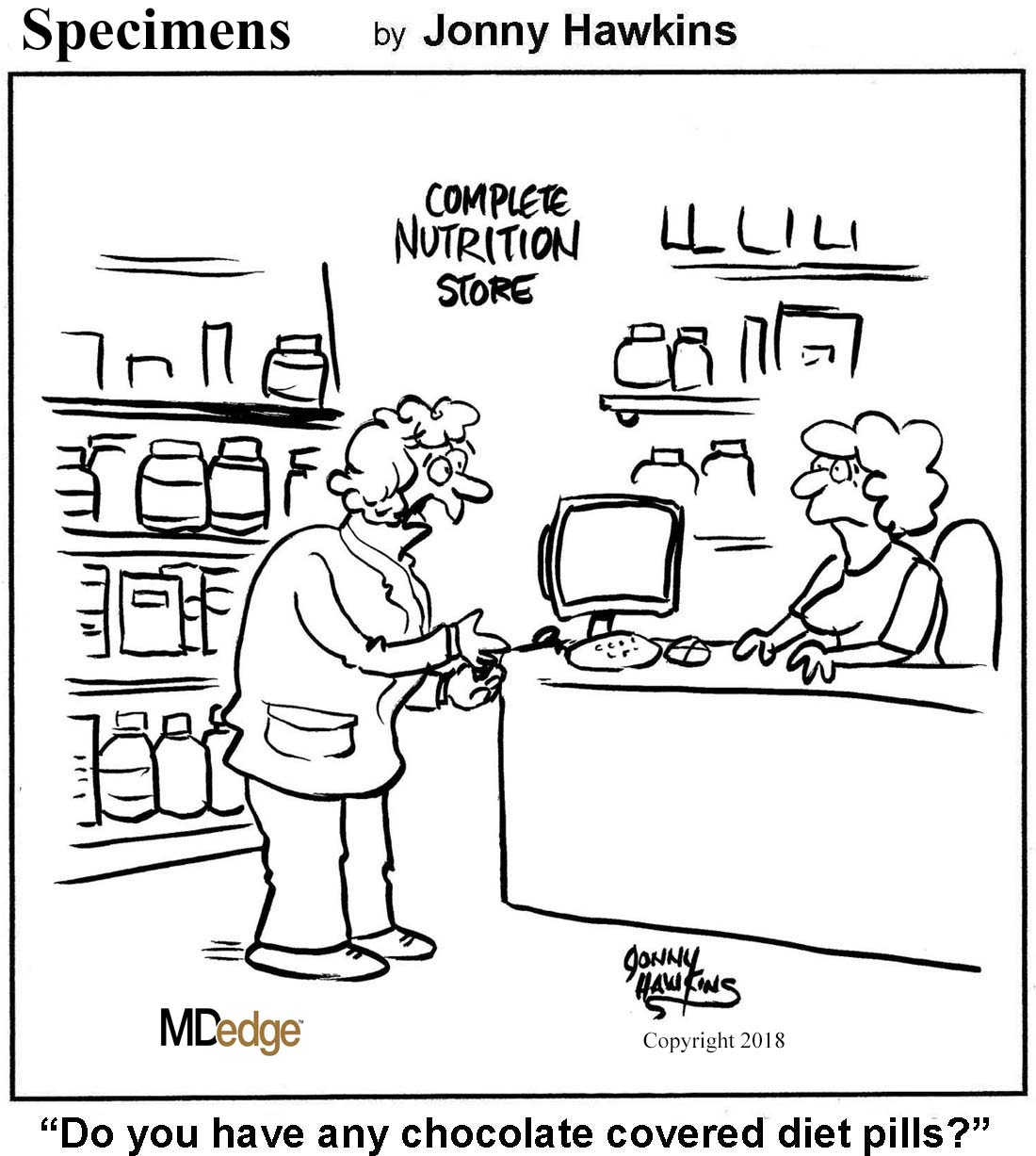
Goodnight, sleep tight ...
File this under creepy-crawly things you never wanted to learn about but now you know. New research into cimicid fossils (a.k.a. bed bugs) shows that the blood-sucking parasites are as old as the dinosaurs.
Bed bugs have been on earth for 115 million years – approximately the same amount of time it takes to get rid of them from your home.
Bats have long been assumed to be the ancestral host of these horrific pests, but a bed bug fossil shows that they precede bats by nearly 30 million years. The idea of a bed bug “fossil” is a little suspicious to us over here at LOTME, though, because we are pretty positive bed bugs only multiply and never die.
The new research, published in Cell, confirmed that the bed bug species had a major split into the two most common forms millions of years before humans arrived. Also confirmed: Dinosaurs clearly slept in beds, and that’s where bed bugs came from.
Dog person? It’s in the genes
Are you a total dog lover? Would you totally risk a little infectious bug if you got to play with some pups? Turns out, your love for Fido might be predicted by your DNA.
An in-depth examination of the Swedish Twin Registry and national dog registers in Sweden found that genetic factors greatly contribute to dog ownership in Sweden. The study could not identify which genes are involved in our choices to keep dogs or if they related to evolution-related factors.
This is good news for dog people, though, because it suggests that if you love dogs, so does your family, and therefore you will be surrounded by dogs forever. At least that is what we’re choosing to believe.
This study could not be repeated with cat owners, because everyone knows cats own their humans, and the cats of Sweden were not interested in participating.
Gastroenterologists answer the big questions
Why does coffee make you poop? All coffee drinkers know this to be the case, and many even plan their mornings around it. But the real reason for this little side effect has always been a bit of a mystery.
Now, a group of researchers from the University of Texas may have an answer.
In a study presented at the annual Digestive Disease Week, the researchers fed coffee to rats for 3 days, analyzing their feces for changes in composition and bacterial make-up. (The joys of being a scientist.) They found that this diet suppressed the bacterial content of the feces; in addition, bacterial growth within the poop was suppressed when exposed to a 1.5% coffee solution on a petri dish.
An analysis of the rats’ intestines – dream job material right there – showed increased muscular motility. All of these effects occurred regardless of caffeine content.
And here’s a bonus: This was more than research just for research’s sake! The researchers claim that, given future study into the subject, coffee could be used as a treatment for ileus, a condition encountered after surgery where the intestines stop working. Apparently, it’s not just your brain that needs to be woken up – even your digestive system could use a coffee now and again.
Big honor for a small pharmaceutical partner
This week, we ask an important medical question: What’s your favorite microbe? Think about that for a minute while we discuss New Jersey’s new bacterial BFF.
S. griseus, it turns out, was discovered in the soil of New Jersey in 1916 and also was “isolated from the gullet of a healthy New Jersey chicken.” In 1943, researchers from Rutgers University (the state university of New Jersey, by the way) used it to create streptomycin, the first antibiotic to treat cholera and tuberculosis. In 1952, Rutgers researcher Selman Waksman received a Nobel Prize for discovering the microbe and creating the antibiotic.
LOTME certainly acknowledges the place of S. griseus in history, but we’ve selected another significant organism as our official microbe: Saccharomyces cerevisiae, also known as brewer’s yeast.
And since we know you were wondering, our official amphibian is the Eastern Hellbender salamander, our official fabric is Carrickmacross lace, our official soil is Harney silt loam, our official fictional opera singer is Placebo Domingo, and our official sport is jousting.

Goodnight, sleep tight ...
File this under creepy-crawly things you never wanted to learn about but now you know. New research into cimicid fossils (a.k.a. bed bugs) shows that the blood-sucking parasites are as old as the dinosaurs.
Bed bugs have been on earth for 115 million years – approximately the same amount of time it takes to get rid of them from your home.
Bats have long been assumed to be the ancestral host of these horrific pests, but a bed bug fossil shows that they precede bats by nearly 30 million years. The idea of a bed bug “fossil” is a little suspicious to us over here at LOTME, though, because we are pretty positive bed bugs only multiply and never die.
The new research, published in Cell, confirmed that the bed bug species had a major split into the two most common forms millions of years before humans arrived. Also confirmed: Dinosaurs clearly slept in beds, and that’s where bed bugs came from.
Dog person? It’s in the genes
Are you a total dog lover? Would you totally risk a little infectious bug if you got to play with some pups? Turns out, your love for Fido might be predicted by your DNA.
An in-depth examination of the Swedish Twin Registry and national dog registers in Sweden found that genetic factors greatly contribute to dog ownership in Sweden. The study could not identify which genes are involved in our choices to keep dogs or if they related to evolution-related factors.
This is good news for dog people, though, because it suggests that if you love dogs, so does your family, and therefore you will be surrounded by dogs forever. At least that is what we’re choosing to believe.
This study could not be repeated with cat owners, because everyone knows cats own their humans, and the cats of Sweden were not interested in participating.
Gastroenterologists answer the big questions
Why does coffee make you poop? All coffee drinkers know this to be the case, and many even plan their mornings around it. But the real reason for this little side effect has always been a bit of a mystery.
Now, a group of researchers from the University of Texas may have an answer.
In a study presented at the annual Digestive Disease Week, the researchers fed coffee to rats for 3 days, analyzing their feces for changes in composition and bacterial make-up. (The joys of being a scientist.) They found that this diet suppressed the bacterial content of the feces; in addition, bacterial growth within the poop was suppressed when exposed to a 1.5% coffee solution on a petri dish.
An analysis of the rats’ intestines – dream job material right there – showed increased muscular motility. All of these effects occurred regardless of caffeine content.
And here’s a bonus: This was more than research just for research’s sake! The researchers claim that, given future study into the subject, coffee could be used as a treatment for ileus, a condition encountered after surgery where the intestines stop working. Apparently, it’s not just your brain that needs to be woken up – even your digestive system could use a coffee now and again.
Big honor for a small pharmaceutical partner
This week, we ask an important medical question: What’s your favorite microbe? Think about that for a minute while we discuss New Jersey’s new bacterial BFF.
S. griseus, it turns out, was discovered in the soil of New Jersey in 1916 and also was “isolated from the gullet of a healthy New Jersey chicken.” In 1943, researchers from Rutgers University (the state university of New Jersey, by the way) used it to create streptomycin, the first antibiotic to treat cholera and tuberculosis. In 1952, Rutgers researcher Selman Waksman received a Nobel Prize for discovering the microbe and creating the antibiotic.
LOTME certainly acknowledges the place of S. griseus in history, but we’ve selected another significant organism as our official microbe: Saccharomyces cerevisiae, also known as brewer’s yeast.
And since we know you were wondering, our official amphibian is the Eastern Hellbender salamander, our official fabric is Carrickmacross lace, our official soil is Harney silt loam, our official fictional opera singer is Placebo Domingo, and our official sport is jousting.

Texting a stroke, game-show grants, and, um, The Beast
Autocorrect, or worse?
Is it just fat thumbs, or something more serious? Incoherent text messages could be the first sign of a stroke for adults, as displayed in two case reports presented at the annual meeting of the American Academy of Neurology.
It makes sense that stroke can cause dystextia: Typing on a phone involves some fine motor, language, and vision skills. Stroke can affect all these functions, leading to bizarre typos or angry political rants on Facebook.
Just kidding; those are equally as concerning but require a whole different diagnosis.
‘Research Funds’ for $11,000, Alex
In the universal struggle for research funding, many a scientist has resorted to desperate measures to keep the lab assistants paid, the JAX Mice fed, and the frontiers of medical science expanding ever outward.
Marina Simian is a biologist for Argentina’s National Scientific and Technical Research Council. She runs a research lab focused on oncology treatments for breast cancer. Faced with a national economic crisis and cuts to research funding, Simian says government funding has nearly dried up. Where did she turn instead?
Enter the local version of the TV game show “Who Wants to be a Millionaire?” Simian went on the show as a contestant, explaining that she needed money to support her cancer research. And when the camera cut away to commercials, Simian walked away with 500,000 pesos ($11,000) in winnings. Which she used to buy more lab supplies.
Admittedly, the “Slumdog Millionaire” approach may not save every cash-strapped scientist’s pet project, but it does give us an idea for game show super champ James Holzhauer’s career when he finally wears out his “Jeopardy!” buzzer: medical research funding consultant.
FDA tames THE BEAST
The LOTME staff had a meeting the other day with our editor (we think he might be the love child of Lois Lane and Ron Burgundy), who said that lately we’ve been “too juvenile” and “not medical enough” and told us to get our “dirty little minds out of the gutter.”
After we stopped crying, he offered up this item from the Food and Drug Administration:
“STIFF BOY LLC. Issues Voluntary Nationwide Recall of THE BEAST Capsules Due to Presence of Undeclared Sildenafil” (no, we did not add the all-caps).
Okay, here goes.
THE BEAST was marketed as a dietary supplement for “male enhancement” (add nonjuvenile but hilarious remark about tumescence), which would not be regulated by the FDA. The presence of Viagra’s active ingredient in the capsules, however, “renders it an unapproved drug for which safety and efficacy have not been established and, therefore, subject to recall,” the FDA said (insert comment about seemingly serious but totally fictitious side effects).
Although the sildenafil in THE BEAST may interact with nitrates found in some prescription drugs, STIFF BOY said that it had not received any reports of adverse events before the recall (imagine a guy working on the engine of his pickup truck).
Seek immediate medical attention if your laughter lasts for more than 4 hours after reading this.
Time flies when you’re having ‘fun’
Match Day is one of the most exciting times in any young, prospective doctor’s life. Finally, the specialty of your dreams is yours. You know the training will be stressful and the hours will be long, but how bad could it be?
It’s not like it’ll take years off your life, right?
Well, according to new research published in Biological Psychiatry, that’s almost exactly what medical residency will do to you.
The researchers took a group of medical students at the University of Michigan, Ann Arbor, entering their first year of residency and measured their telomere length both before and after their internship year, comparing it with a group of first-year undergraduates. Rapidly shrinking telomere length is a well-accepted sign of aging, and interns had their telomeres shrink at a rate six times faster than their nonmedical peers, who were apparently too busy doing upside-down kegstands to notice how stressful college can be.
Oh, don’t worry, there was most definitely an association between hours worked and increased telomere shrinkage. Those who had to work more than 80 hours a week aged most of all.
So, if you emerge from a particularly difficult internship with the sudden desire to yell at those darn kids for being on your lawn, we completely understand.
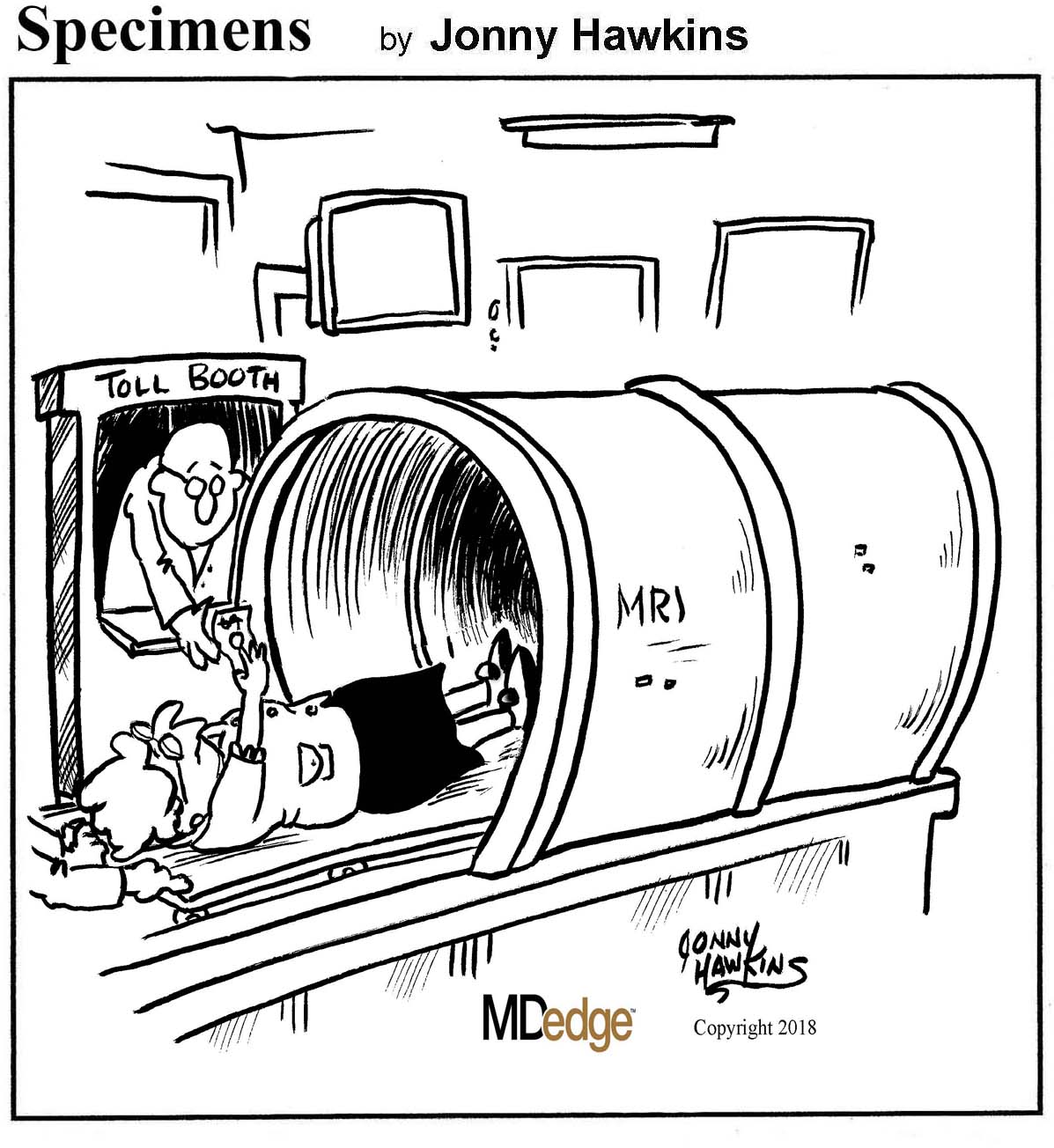
Autocorrect, or worse?
Is it just fat thumbs, or something more serious? Incoherent text messages could be the first sign of a stroke for adults, as displayed in two case reports presented at the annual meeting of the American Academy of Neurology.
It makes sense that stroke can cause dystextia: Typing on a phone involves some fine motor, language, and vision skills. Stroke can affect all these functions, leading to bizarre typos or angry political rants on Facebook.
Just kidding; those are equally as concerning but require a whole different diagnosis.
‘Research Funds’ for $11,000, Alex
In the universal struggle for research funding, many a scientist has resorted to desperate measures to keep the lab assistants paid, the JAX Mice fed, and the frontiers of medical science expanding ever outward.
Marina Simian is a biologist for Argentina’s National Scientific and Technical Research Council. She runs a research lab focused on oncology treatments for breast cancer. Faced with a national economic crisis and cuts to research funding, Simian says government funding has nearly dried up. Where did she turn instead?
Enter the local version of the TV game show “Who Wants to be a Millionaire?” Simian went on the show as a contestant, explaining that she needed money to support her cancer research. And when the camera cut away to commercials, Simian walked away with 500,000 pesos ($11,000) in winnings. Which she used to buy more lab supplies.
Admittedly, the “Slumdog Millionaire” approach may not save every cash-strapped scientist’s pet project, but it does give us an idea for game show super champ James Holzhauer’s career when he finally wears out his “Jeopardy!” buzzer: medical research funding consultant.
FDA tames THE BEAST
The LOTME staff had a meeting the other day with our editor (we think he might be the love child of Lois Lane and Ron Burgundy), who said that lately we’ve been “too juvenile” and “not medical enough” and told us to get our “dirty little minds out of the gutter.”
After we stopped crying, he offered up this item from the Food and Drug Administration:
“STIFF BOY LLC. Issues Voluntary Nationwide Recall of THE BEAST Capsules Due to Presence of Undeclared Sildenafil” (no, we did not add the all-caps).
Okay, here goes.
THE BEAST was marketed as a dietary supplement for “male enhancement” (add nonjuvenile but hilarious remark about tumescence), which would not be regulated by the FDA. The presence of Viagra’s active ingredient in the capsules, however, “renders it an unapproved drug for which safety and efficacy have not been established and, therefore, subject to recall,” the FDA said (insert comment about seemingly serious but totally fictitious side effects).
Although the sildenafil in THE BEAST may interact with nitrates found in some prescription drugs, STIFF BOY said that it had not received any reports of adverse events before the recall (imagine a guy working on the engine of his pickup truck).
Seek immediate medical attention if your laughter lasts for more than 4 hours after reading this.
Time flies when you’re having ‘fun’
Match Day is one of the most exciting times in any young, prospective doctor’s life. Finally, the specialty of your dreams is yours. You know the training will be stressful and the hours will be long, but how bad could it be?
It’s not like it’ll take years off your life, right?
Well, according to new research published in Biological Psychiatry, that’s almost exactly what medical residency will do to you.
The researchers took a group of medical students at the University of Michigan, Ann Arbor, entering their first year of residency and measured their telomere length both before and after their internship year, comparing it with a group of first-year undergraduates. Rapidly shrinking telomere length is a well-accepted sign of aging, and interns had their telomeres shrink at a rate six times faster than their nonmedical peers, who were apparently too busy doing upside-down kegstands to notice how stressful college can be.
Oh, don’t worry, there was most definitely an association between hours worked and increased telomere shrinkage. Those who had to work more than 80 hours a week aged most of all.
So, if you emerge from a particularly difficult internship with the sudden desire to yell at those darn kids for being on your lawn, we completely understand.

Autocorrect, or worse?
Is it just fat thumbs, or something more serious? Incoherent text messages could be the first sign of a stroke for adults, as displayed in two case reports presented at the annual meeting of the American Academy of Neurology.
It makes sense that stroke can cause dystextia: Typing on a phone involves some fine motor, language, and vision skills. Stroke can affect all these functions, leading to bizarre typos or angry political rants on Facebook.
Just kidding; those are equally as concerning but require a whole different diagnosis.
‘Research Funds’ for $11,000, Alex
In the universal struggle for research funding, many a scientist has resorted to desperate measures to keep the lab assistants paid, the JAX Mice fed, and the frontiers of medical science expanding ever outward.
Marina Simian is a biologist for Argentina’s National Scientific and Technical Research Council. She runs a research lab focused on oncology treatments for breast cancer. Faced with a national economic crisis and cuts to research funding, Simian says government funding has nearly dried up. Where did she turn instead?
Enter the local version of the TV game show “Who Wants to be a Millionaire?” Simian went on the show as a contestant, explaining that she needed money to support her cancer research. And when the camera cut away to commercials, Simian walked away with 500,000 pesos ($11,000) in winnings. Which she used to buy more lab supplies.
Admittedly, the “Slumdog Millionaire” approach may not save every cash-strapped scientist’s pet project, but it does give us an idea for game show super champ James Holzhauer’s career when he finally wears out his “Jeopardy!” buzzer: medical research funding consultant.
FDA tames THE BEAST
The LOTME staff had a meeting the other day with our editor (we think he might be the love child of Lois Lane and Ron Burgundy), who said that lately we’ve been “too juvenile” and “not medical enough” and told us to get our “dirty little minds out of the gutter.”
After we stopped crying, he offered up this item from the Food and Drug Administration:
“STIFF BOY LLC. Issues Voluntary Nationwide Recall of THE BEAST Capsules Due to Presence of Undeclared Sildenafil” (no, we did not add the all-caps).
Okay, here goes.
THE BEAST was marketed as a dietary supplement for “male enhancement” (add nonjuvenile but hilarious remark about tumescence), which would not be regulated by the FDA. The presence of Viagra’s active ingredient in the capsules, however, “renders it an unapproved drug for which safety and efficacy have not been established and, therefore, subject to recall,” the FDA said (insert comment about seemingly serious but totally fictitious side effects).
Although the sildenafil in THE BEAST may interact with nitrates found in some prescription drugs, STIFF BOY said that it had not received any reports of adverse events before the recall (imagine a guy working on the engine of his pickup truck).
Seek immediate medical attention if your laughter lasts for more than 4 hours after reading this.
Time flies when you’re having ‘fun’
Match Day is one of the most exciting times in any young, prospective doctor’s life. Finally, the specialty of your dreams is yours. You know the training will be stressful and the hours will be long, but how bad could it be?
It’s not like it’ll take years off your life, right?
Well, according to new research published in Biological Psychiatry, that’s almost exactly what medical residency will do to you.
The researchers took a group of medical students at the University of Michigan, Ann Arbor, entering their first year of residency and measured their telomere length both before and after their internship year, comparing it with a group of first-year undergraduates. Rapidly shrinking telomere length is a well-accepted sign of aging, and interns had their telomeres shrink at a rate six times faster than their nonmedical peers, who were apparently too busy doing upside-down kegstands to notice how stressful college can be.
Oh, don’t worry, there was most definitely an association between hours worked and increased telomere shrinkage. Those who had to work more than 80 hours a week aged most of all.
So, if you emerge from a particularly difficult internship with the sudden desire to yell at those darn kids for being on your lawn, we completely understand.

The Poké-sulcus, interchangeable hipsters, and worm PTSD
Gotta catch ‘em all
In a somewhat unsurprising turn of events, researchers have discovered the exact impact that late-1990s Pokémon obsession had on the human brain. Could Bulbasaur and Charmander really change the way your gray matter works? Pikachu says yes.
Researchers scanned the brains of adults who played Pokémon extensively as children (and possibly as not-children, with the advent of Pokémon Go). They found that, in these adults, the occipitotemporal sulcus region of the brain responded more to images of Pokémon – the original 150, of course – than any other type of image.
The researchers compared this result to “novices” (a.k.a. people who had other hobbies) and noted that novice brains did not have a preference for Pokémon.
Basically, the brain of these experienced players has built them an internal Pokédex, fulfilling the dream of every Pokémaster. Ash Ketchum would be proud.
Hipsters don’t all look the same! (Yes, they do)
Slouchy beanie, scruffy beard, maybe a pair of fake spectacles, and definitely flannel – the uniform of the male hipster. Today’s Beatnik-wannabes all praise nonconformism, but what happens when everyone nonconforms the same?
You get an extremely hilarious threat of lawsuit, that’s what.
The MIT Technology Review published an article about the studies from a mathematician from Brandeis University, who examines how information transmission influences the behavior of a population.
He found that, in general, hipsters in a society initially “act randomly but then undergo a phase transition into a synchronized state.” Despite all their best efforts to push against the mainstream, hipsters eventually sync up with one another and conform to each other.
The article was published with a photo of a man in a beanie, beard, and plaid shirt. The publication soon received an email from a man who claimed he was the person in the photo, and he hadn’t given his consent, and he was upset with the article, calling it a “bit of click-bait about why hipsters all look the same.”
The email-writer angrily threatened legal action … until a quick image check showed that he was not, in fact, the man in the stock photo.
The unnamed hipster slunk away to recover in shame, presumably with organic coffee and a Neutral Milk Hotel album on vinyl.
You don’t need a brain to feel fear
PTSD is normally not a laughing matter. It’s a real mental health disorder, and it deserves to be studied. But somehow, a group of researchers from the Hebrew University of Jerusalem found comedy gold researching the disorder by giving PTSD to ... worms.
Specifically, to Caenorhabditis elegans, a workhorse of biological research. In a study published in Current Biology, the researchers starved their hapless test subjects for a day while spraying them with a scent they normally enjoy. The next day, the worms were fed properly, but when exposed to the same scent, the nematodes went into a defensive mode, showing C. elegans is capable of associative memory.
Because C. elegans only has 302 neurons, it was very simple to find which neurons were affecting their memory and genetically engineer future generations whose “fight or flight” impulse could be activated by switching a light on or off.
Obviously, determining which specific neurons carry associative memory has benefit for the potential treatment of PTSD. We have to wonder though, what do the researchers tell people they do for a living? “Ah, yes, I’m conducting very important research: I make small worms afraid of the light.”
Can’t imagine they get invited to too many parties.
Fly the organ-friendly skies
Much like the proverbial stork, a drone flew 2.8 miles over Baltimore during the early-morning hours of April 19 to deliver a precious cargo.
What? No, it was not a baby! Are you nuts?
This drone was, in fact, the first unmanned aircraft to deliver a human donor organ – in this case, a kidney. This next big step for medicine was taken by the team of Joseph Scalea, MD, of the University of Maryland in Baltimore, one of the surgeons who performed the transplant. In earlier test flights, Dr. Scalea’s team was the first to use a drone to transport medical supplies, such as saline and blood tubes, between the launch site and the helipad at the university medical center.
The custom-made drone “needed to meet the rigid medical, technical, and regulatory demands of carrying an unaccompanied deceased donor organ for human transplant.” It has backup propellers, backup motors, dual batteries, and a parachute recovery system, as well as an organ-tracking system, unlike current methods, according to the university.
Our regular reader (Thanks again, Dr Pepper) may remember that LOTME recently reported on San Francisco’s “Poop Patrol” and suggested that the media would hail it as “Uber, but for poop.” Care to take a guess at what Dr. Scalea called his drone?
That right. “Uber for organs.” Sigh. That’s supposed to be our job. No, wait a second!
Okay, here’s one: “organ droner.”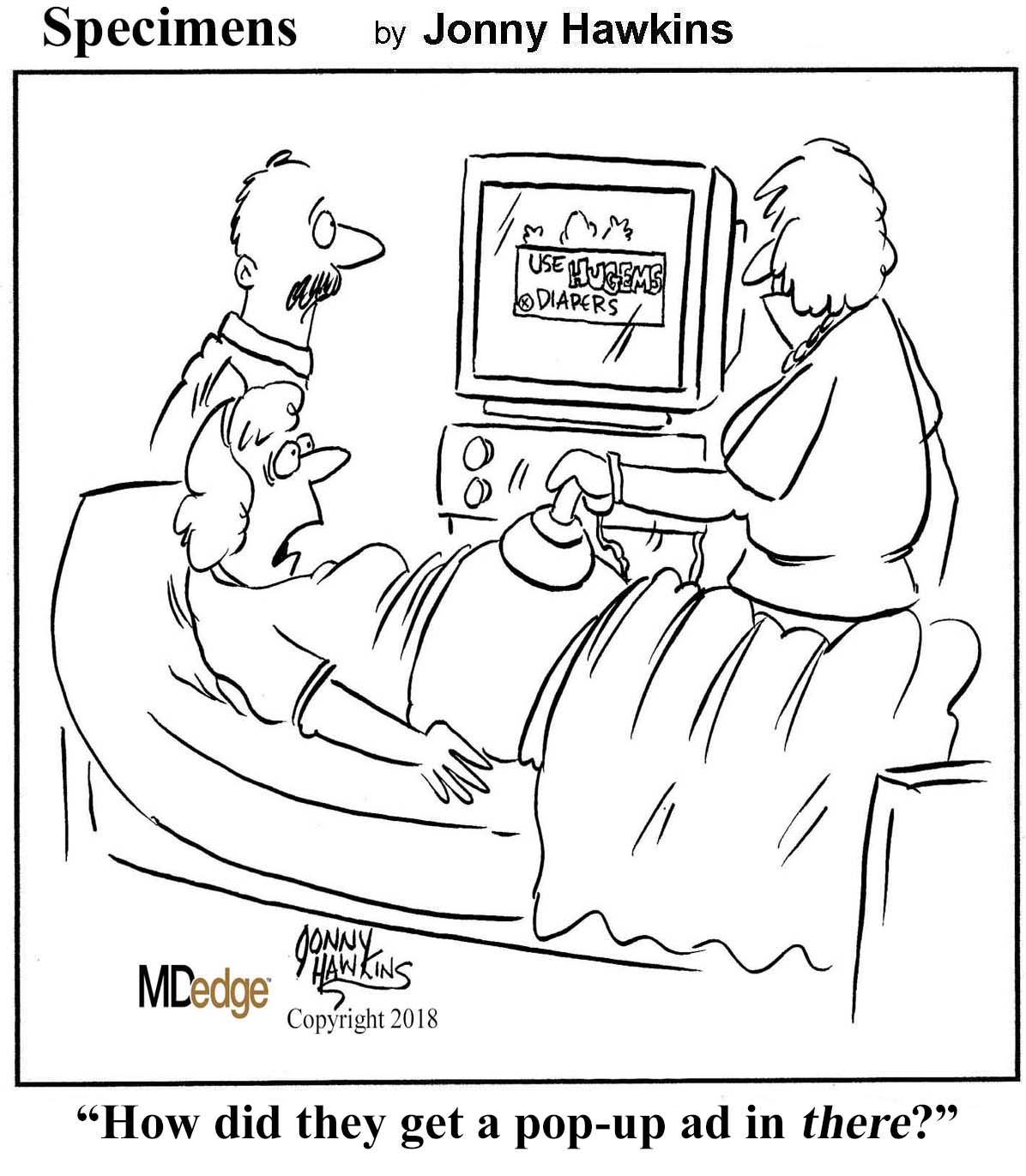
Gotta catch ‘em all
In a somewhat unsurprising turn of events, researchers have discovered the exact impact that late-1990s Pokémon obsession had on the human brain. Could Bulbasaur and Charmander really change the way your gray matter works? Pikachu says yes.
Researchers scanned the brains of adults who played Pokémon extensively as children (and possibly as not-children, with the advent of Pokémon Go). They found that, in these adults, the occipitotemporal sulcus region of the brain responded more to images of Pokémon – the original 150, of course – than any other type of image.
The researchers compared this result to “novices” (a.k.a. people who had other hobbies) and noted that novice brains did not have a preference for Pokémon.
Basically, the brain of these experienced players has built them an internal Pokédex, fulfilling the dream of every Pokémaster. Ash Ketchum would be proud.
Hipsters don’t all look the same! (Yes, they do)
Slouchy beanie, scruffy beard, maybe a pair of fake spectacles, and definitely flannel – the uniform of the male hipster. Today’s Beatnik-wannabes all praise nonconformism, but what happens when everyone nonconforms the same?
You get an extremely hilarious threat of lawsuit, that’s what.
The MIT Technology Review published an article about the studies from a mathematician from Brandeis University, who examines how information transmission influences the behavior of a population.
He found that, in general, hipsters in a society initially “act randomly but then undergo a phase transition into a synchronized state.” Despite all their best efforts to push against the mainstream, hipsters eventually sync up with one another and conform to each other.
The article was published with a photo of a man in a beanie, beard, and plaid shirt. The publication soon received an email from a man who claimed he was the person in the photo, and he hadn’t given his consent, and he was upset with the article, calling it a “bit of click-bait about why hipsters all look the same.”
The email-writer angrily threatened legal action … until a quick image check showed that he was not, in fact, the man in the stock photo.
The unnamed hipster slunk away to recover in shame, presumably with organic coffee and a Neutral Milk Hotel album on vinyl.
You don’t need a brain to feel fear
PTSD is normally not a laughing matter. It’s a real mental health disorder, and it deserves to be studied. But somehow, a group of researchers from the Hebrew University of Jerusalem found comedy gold researching the disorder by giving PTSD to ... worms.
Specifically, to Caenorhabditis elegans, a workhorse of biological research. In a study published in Current Biology, the researchers starved their hapless test subjects for a day while spraying them with a scent they normally enjoy. The next day, the worms were fed properly, but when exposed to the same scent, the nematodes went into a defensive mode, showing C. elegans is capable of associative memory.
Because C. elegans only has 302 neurons, it was very simple to find which neurons were affecting their memory and genetically engineer future generations whose “fight or flight” impulse could be activated by switching a light on or off.
Obviously, determining which specific neurons carry associative memory has benefit for the potential treatment of PTSD. We have to wonder though, what do the researchers tell people they do for a living? “Ah, yes, I’m conducting very important research: I make small worms afraid of the light.”
Can’t imagine they get invited to too many parties.
Fly the organ-friendly skies
Much like the proverbial stork, a drone flew 2.8 miles over Baltimore during the early-morning hours of April 19 to deliver a precious cargo.
What? No, it was not a baby! Are you nuts?
This drone was, in fact, the first unmanned aircraft to deliver a human donor organ – in this case, a kidney. This next big step for medicine was taken by the team of Joseph Scalea, MD, of the University of Maryland in Baltimore, one of the surgeons who performed the transplant. In earlier test flights, Dr. Scalea’s team was the first to use a drone to transport medical supplies, such as saline and blood tubes, between the launch site and the helipad at the university medical center.
The custom-made drone “needed to meet the rigid medical, technical, and regulatory demands of carrying an unaccompanied deceased donor organ for human transplant.” It has backup propellers, backup motors, dual batteries, and a parachute recovery system, as well as an organ-tracking system, unlike current methods, according to the university.
Our regular reader (Thanks again, Dr Pepper) may remember that LOTME recently reported on San Francisco’s “Poop Patrol” and suggested that the media would hail it as “Uber, but for poop.” Care to take a guess at what Dr. Scalea called his drone?
That right. “Uber for organs.” Sigh. That’s supposed to be our job. No, wait a second!
Okay, here’s one: “organ droner.”
Gotta catch ‘em all
In a somewhat unsurprising turn of events, researchers have discovered the exact impact that late-1990s Pokémon obsession had on the human brain. Could Bulbasaur and Charmander really change the way your gray matter works? Pikachu says yes.
Researchers scanned the brains of adults who played Pokémon extensively as children (and possibly as not-children, with the advent of Pokémon Go). They found that, in these adults, the occipitotemporal sulcus region of the brain responded more to images of Pokémon – the original 150, of course – than any other type of image.
The researchers compared this result to “novices” (a.k.a. people who had other hobbies) and noted that novice brains did not have a preference for Pokémon.
Basically, the brain of these experienced players has built them an internal Pokédex, fulfilling the dream of every Pokémaster. Ash Ketchum would be proud.
Hipsters don’t all look the same! (Yes, they do)
Slouchy beanie, scruffy beard, maybe a pair of fake spectacles, and definitely flannel – the uniform of the male hipster. Today’s Beatnik-wannabes all praise nonconformism, but what happens when everyone nonconforms the same?
You get an extremely hilarious threat of lawsuit, that’s what.
The MIT Technology Review published an article about the studies from a mathematician from Brandeis University, who examines how information transmission influences the behavior of a population.
He found that, in general, hipsters in a society initially “act randomly but then undergo a phase transition into a synchronized state.” Despite all their best efforts to push against the mainstream, hipsters eventually sync up with one another and conform to each other.
The article was published with a photo of a man in a beanie, beard, and plaid shirt. The publication soon received an email from a man who claimed he was the person in the photo, and he hadn’t given his consent, and he was upset with the article, calling it a “bit of click-bait about why hipsters all look the same.”
The email-writer angrily threatened legal action … until a quick image check showed that he was not, in fact, the man in the stock photo.
The unnamed hipster slunk away to recover in shame, presumably with organic coffee and a Neutral Milk Hotel album on vinyl.
You don’t need a brain to feel fear
PTSD is normally not a laughing matter. It’s a real mental health disorder, and it deserves to be studied. But somehow, a group of researchers from the Hebrew University of Jerusalem found comedy gold researching the disorder by giving PTSD to ... worms.
Specifically, to Caenorhabditis elegans, a workhorse of biological research. In a study published in Current Biology, the researchers starved their hapless test subjects for a day while spraying them with a scent they normally enjoy. The next day, the worms were fed properly, but when exposed to the same scent, the nematodes went into a defensive mode, showing C. elegans is capable of associative memory.
Because C. elegans only has 302 neurons, it was very simple to find which neurons were affecting their memory and genetically engineer future generations whose “fight or flight” impulse could be activated by switching a light on or off.
Obviously, determining which specific neurons carry associative memory has benefit for the potential treatment of PTSD. We have to wonder though, what do the researchers tell people they do for a living? “Ah, yes, I’m conducting very important research: I make small worms afraid of the light.”
Can’t imagine they get invited to too many parties.
Fly the organ-friendly skies
Much like the proverbial stork, a drone flew 2.8 miles over Baltimore during the early-morning hours of April 19 to deliver a precious cargo.
What? No, it was not a baby! Are you nuts?
This drone was, in fact, the first unmanned aircraft to deliver a human donor organ – in this case, a kidney. This next big step for medicine was taken by the team of Joseph Scalea, MD, of the University of Maryland in Baltimore, one of the surgeons who performed the transplant. In earlier test flights, Dr. Scalea’s team was the first to use a drone to transport medical supplies, such as saline and blood tubes, between the launch site and the helipad at the university medical center.
The custom-made drone “needed to meet the rigid medical, technical, and regulatory demands of carrying an unaccompanied deceased donor organ for human transplant.” It has backup propellers, backup motors, dual batteries, and a parachute recovery system, as well as an organ-tracking system, unlike current methods, according to the university.
Our regular reader (Thanks again, Dr Pepper) may remember that LOTME recently reported on San Francisco’s “Poop Patrol” and suggested that the media would hail it as “Uber, but for poop.” Care to take a guess at what Dr. Scalea called his drone?
That right. “Uber for organs.” Sigh. That’s supposed to be our job. No, wait a second!
Okay, here’s one: “organ droner.”
Empty words, Captain Bacteria, and the perils of vampire facials
And now, 37 words from our sponsor
If you’re looking for gluten-free news of the health and medical sciences that’s low in sugar, we here at LOTME Farms promise to use no artificial colors or flavors to tell you about a study of the health claims on cereal boxes.
Researchers identified 37 such claims that appeared on the boxes of 460 different breakfast cereals and grouped them into four categories: adding positives (high fiber, probiotics), not adding negatives (GMO free, no high-fructose corn syrup), removing negatives (low cholesterol, no trans fat), and not removing positives (made with whole grains, fresh).
What they found is that words matter: None of the 37 claims explicitly said that the product inside would make people healthier or help them lose weight, but that was how respondents interpreted them. There is, of course, a reason none of the products claimed to improve health. “The correlation between the type of ‘healthy’ claim made and the actual nutritional quality of the breakfast cereal was almost zero,” investigator Pierre Chandon said.
This is, perhaps, not such a surprise. But we here at the pure, all-natural LOTME deal with facts, which are low in calories and contain no artificial growth hormones, and we would never insult (NEW LOTME LIGHT! NO ARTIFICIAL SWEETENERS!) our wholesome, low-fat readers by resorting (TRY FRESH LOTME ORGANIC!) to hyperbole or doublespeak. Not a chance (MMM … HOMEMADE LOTME).
Now, who’s up for a bowl of Froot Loops?
Captain Bacteria: Civil War
In the never-ending struggle of bacteria versus the world, Clostridium difficile has become a particularly stubborn foe. It is far more likely to be resistant to antibiotics, and the antibiotics that can do the job are either incredibly expensive or destroy the patient’s entire microbiota. However, we may have a new ally in the fight against C. diff: other bacteria.
Specifically, we’re talking about fecal transplants. According to an article published in the Journal of the American Osteopathic Association, the wide variety of bacteria that get transferred into the body along with the poop can block C. diff’s ability to germinate and produce the toxins that affect the human body. The treatment is especially beneficial for patients with C. diff whose microbiotas have been compromised by some other treatment, like chemotherapy, antibiotics, or proton pump inhibitors.
We here at LOTME would like to take a moment to salute the brave bacteria in our guts, fighting the good fight against those who would do us harm, and to the fecal transplants that let our own bacteria join the battle. Poop, you never let us down!
Dracula side effects
The Kim Kardashian effect is having dire ramifications. Back in 2013, the social media influencer posted a photo of herself getting a “vampire facial” – a dermatologic procedure in which a person’s own blood is injected into their face as a way to freshen and rejuvenate their skin. At least they aren’t drinking it.
Vampire facials have skyrocketed in popularity since, despite the ick factor. Unfortunately, it seems to be as dangerous as an encounter with a real vampire: Recently, two people in New Mexico were diagnosed with HIV after getting vampire facials.
The New Mexico Department of Health noted that both cases have been traced to the same spa, which was shut down in 2018 after at least three government agencies noted its lack of attention to hygiene and cleanliness. Warning to all: Just because a Kardashian does it doesn’t mean you should, too.
Shave that beard, Fido
The adage “a dog’s mouth is cleaner than a person’s” is getting an upgrade and this time it’s backed by science. A clinic in Zurich looked at the pathogenic microorganisms that reside in men’s beards and dogs’ fur and guess what – the beards were dirtier.
Despite beards’ manly cache among Millennials and hipsters, the results many have some reaching for the razor. The clinicians took a look at the bacterial load of colony-forming units of human-pathogenic microorganisms, and compared samples of beards and dog’s necks (since dogs don’t have beards, but how cute would that be?). They found high microbial counts in all beard samples, but only 23 of 30 dogs’ hair samples. Half of the human subjects carried so much bacteria that they were in danger of illness, the researchers noted.
Does this mean men are dirty? Or are dogs clean? The clinicians didn’t survey the men on their habits so it could be likely that they spend lots of time rolling around in the grass or drinking water from the toilet. More research is definitely needed here.
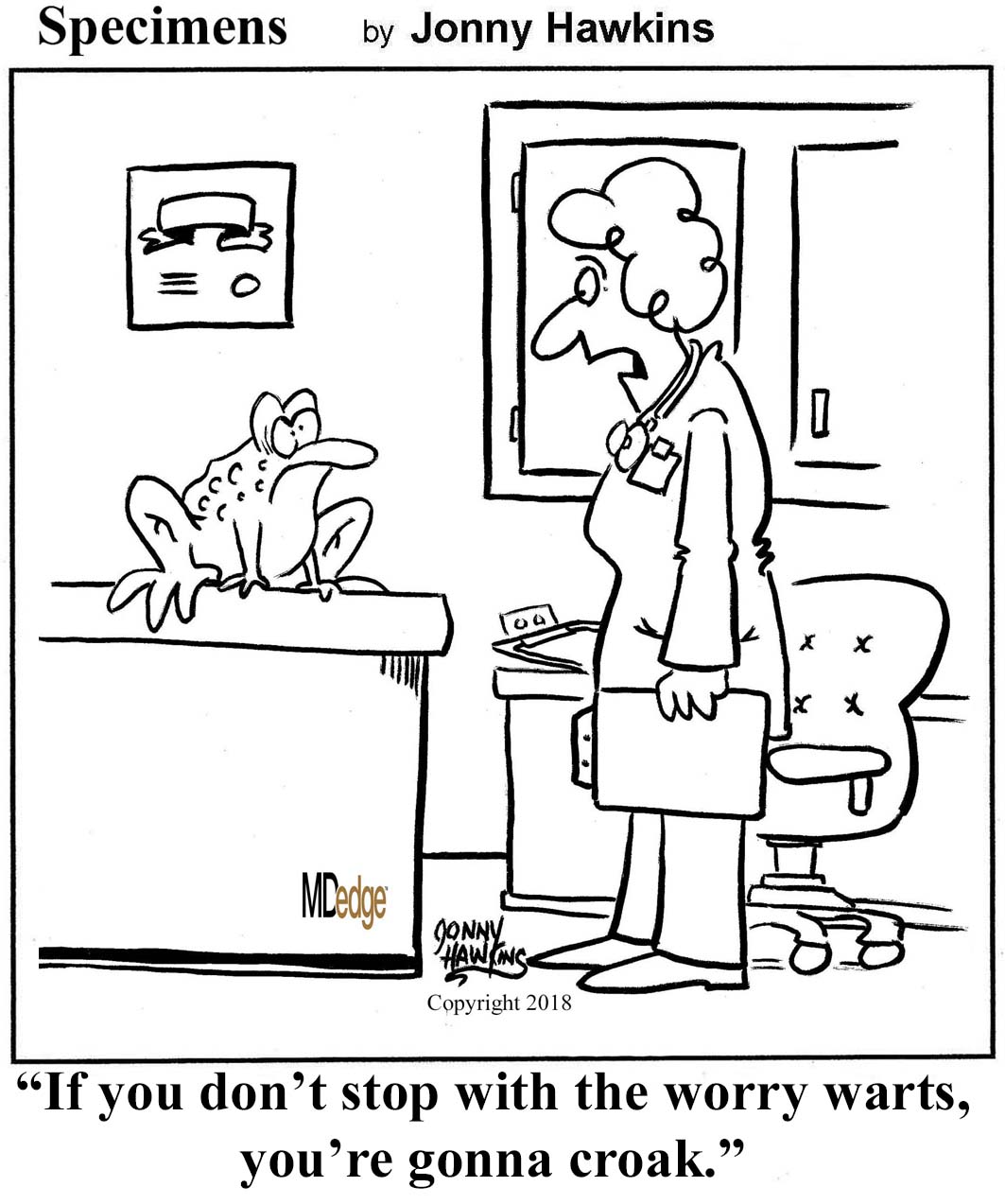
And now, 37 words from our sponsor
If you’re looking for gluten-free news of the health and medical sciences that’s low in sugar, we here at LOTME Farms promise to use no artificial colors or flavors to tell you about a study of the health claims on cereal boxes.
Researchers identified 37 such claims that appeared on the boxes of 460 different breakfast cereals and grouped them into four categories: adding positives (high fiber, probiotics), not adding negatives (GMO free, no high-fructose corn syrup), removing negatives (low cholesterol, no trans fat), and not removing positives (made with whole grains, fresh).
What they found is that words matter: None of the 37 claims explicitly said that the product inside would make people healthier or help them lose weight, but that was how respondents interpreted them. There is, of course, a reason none of the products claimed to improve health. “The correlation between the type of ‘healthy’ claim made and the actual nutritional quality of the breakfast cereal was almost zero,” investigator Pierre Chandon said.
This is, perhaps, not such a surprise. But we here at the pure, all-natural LOTME deal with facts, which are low in calories and contain no artificial growth hormones, and we would never insult (NEW LOTME LIGHT! NO ARTIFICIAL SWEETENERS!) our wholesome, low-fat readers by resorting (TRY FRESH LOTME ORGANIC!) to hyperbole or doublespeak. Not a chance (MMM … HOMEMADE LOTME).
Now, who’s up for a bowl of Froot Loops?
Captain Bacteria: Civil War
In the never-ending struggle of bacteria versus the world, Clostridium difficile has become a particularly stubborn foe. It is far more likely to be resistant to antibiotics, and the antibiotics that can do the job are either incredibly expensive or destroy the patient’s entire microbiota. However, we may have a new ally in the fight against C. diff: other bacteria.
Specifically, we’re talking about fecal transplants. According to an article published in the Journal of the American Osteopathic Association, the wide variety of bacteria that get transferred into the body along with the poop can block C. diff’s ability to germinate and produce the toxins that affect the human body. The treatment is especially beneficial for patients with C. diff whose microbiotas have been compromised by some other treatment, like chemotherapy, antibiotics, or proton pump inhibitors.
We here at LOTME would like to take a moment to salute the brave bacteria in our guts, fighting the good fight against those who would do us harm, and to the fecal transplants that let our own bacteria join the battle. Poop, you never let us down!
Dracula side effects
The Kim Kardashian effect is having dire ramifications. Back in 2013, the social media influencer posted a photo of herself getting a “vampire facial” – a dermatologic procedure in which a person’s own blood is injected into their face as a way to freshen and rejuvenate their skin. At least they aren’t drinking it.
Vampire facials have skyrocketed in popularity since, despite the ick factor. Unfortunately, it seems to be as dangerous as an encounter with a real vampire: Recently, two people in New Mexico were diagnosed with HIV after getting vampire facials.
The New Mexico Department of Health noted that both cases have been traced to the same spa, which was shut down in 2018 after at least three government agencies noted its lack of attention to hygiene and cleanliness. Warning to all: Just because a Kardashian does it doesn’t mean you should, too.
Shave that beard, Fido
The adage “a dog’s mouth is cleaner than a person’s” is getting an upgrade and this time it’s backed by science. A clinic in Zurich looked at the pathogenic microorganisms that reside in men’s beards and dogs’ fur and guess what – the beards were dirtier.
Despite beards’ manly cache among Millennials and hipsters, the results many have some reaching for the razor. The clinicians took a look at the bacterial load of colony-forming units of human-pathogenic microorganisms, and compared samples of beards and dog’s necks (since dogs don’t have beards, but how cute would that be?). They found high microbial counts in all beard samples, but only 23 of 30 dogs’ hair samples. Half of the human subjects carried so much bacteria that they were in danger of illness, the researchers noted.
Does this mean men are dirty? Or are dogs clean? The clinicians didn’t survey the men on their habits so it could be likely that they spend lots of time rolling around in the grass or drinking water from the toilet. More research is definitely needed here.

And now, 37 words from our sponsor
If you’re looking for gluten-free news of the health and medical sciences that’s low in sugar, we here at LOTME Farms promise to use no artificial colors or flavors to tell you about a study of the health claims on cereal boxes.
Researchers identified 37 such claims that appeared on the boxes of 460 different breakfast cereals and grouped them into four categories: adding positives (high fiber, probiotics), not adding negatives (GMO free, no high-fructose corn syrup), removing negatives (low cholesterol, no trans fat), and not removing positives (made with whole grains, fresh).
What they found is that words matter: None of the 37 claims explicitly said that the product inside would make people healthier or help them lose weight, but that was how respondents interpreted them. There is, of course, a reason none of the products claimed to improve health. “The correlation between the type of ‘healthy’ claim made and the actual nutritional quality of the breakfast cereal was almost zero,” investigator Pierre Chandon said.
This is, perhaps, not such a surprise. But we here at the pure, all-natural LOTME deal with facts, which are low in calories and contain no artificial growth hormones, and we would never insult (NEW LOTME LIGHT! NO ARTIFICIAL SWEETENERS!) our wholesome, low-fat readers by resorting (TRY FRESH LOTME ORGANIC!) to hyperbole or doublespeak. Not a chance (MMM … HOMEMADE LOTME).
Now, who’s up for a bowl of Froot Loops?
Captain Bacteria: Civil War
In the never-ending struggle of bacteria versus the world, Clostridium difficile has become a particularly stubborn foe. It is far more likely to be resistant to antibiotics, and the antibiotics that can do the job are either incredibly expensive or destroy the patient’s entire microbiota. However, we may have a new ally in the fight against C. diff: other bacteria.
Specifically, we’re talking about fecal transplants. According to an article published in the Journal of the American Osteopathic Association, the wide variety of bacteria that get transferred into the body along with the poop can block C. diff’s ability to germinate and produce the toxins that affect the human body. The treatment is especially beneficial for patients with C. diff whose microbiotas have been compromised by some other treatment, like chemotherapy, antibiotics, or proton pump inhibitors.
We here at LOTME would like to take a moment to salute the brave bacteria in our guts, fighting the good fight against those who would do us harm, and to the fecal transplants that let our own bacteria join the battle. Poop, you never let us down!
Dracula side effects
The Kim Kardashian effect is having dire ramifications. Back in 2013, the social media influencer posted a photo of herself getting a “vampire facial” – a dermatologic procedure in which a person’s own blood is injected into their face as a way to freshen and rejuvenate their skin. At least they aren’t drinking it.
Vampire facials have skyrocketed in popularity since, despite the ick factor. Unfortunately, it seems to be as dangerous as an encounter with a real vampire: Recently, two people in New Mexico were diagnosed with HIV after getting vampire facials.
The New Mexico Department of Health noted that both cases have been traced to the same spa, which was shut down in 2018 after at least three government agencies noted its lack of attention to hygiene and cleanliness. Warning to all: Just because a Kardashian does it doesn’t mean you should, too.
Shave that beard, Fido
The adage “a dog’s mouth is cleaner than a person’s” is getting an upgrade and this time it’s backed by science. A clinic in Zurich looked at the pathogenic microorganisms that reside in men’s beards and dogs’ fur and guess what – the beards were dirtier.
Despite beards’ manly cache among Millennials and hipsters, the results many have some reaching for the razor. The clinicians took a look at the bacterial load of colony-forming units of human-pathogenic microorganisms, and compared samples of beards and dog’s necks (since dogs don’t have beards, but how cute would that be?). They found high microbial counts in all beard samples, but only 23 of 30 dogs’ hair samples. Half of the human subjects carried so much bacteria that they were in danger of illness, the researchers noted.
Does this mean men are dirty? Or are dogs clean? The clinicians didn’t survey the men on their habits so it could be likely that they spend lots of time rolling around in the grass or drinking water from the toilet. More research is definitely needed here.

